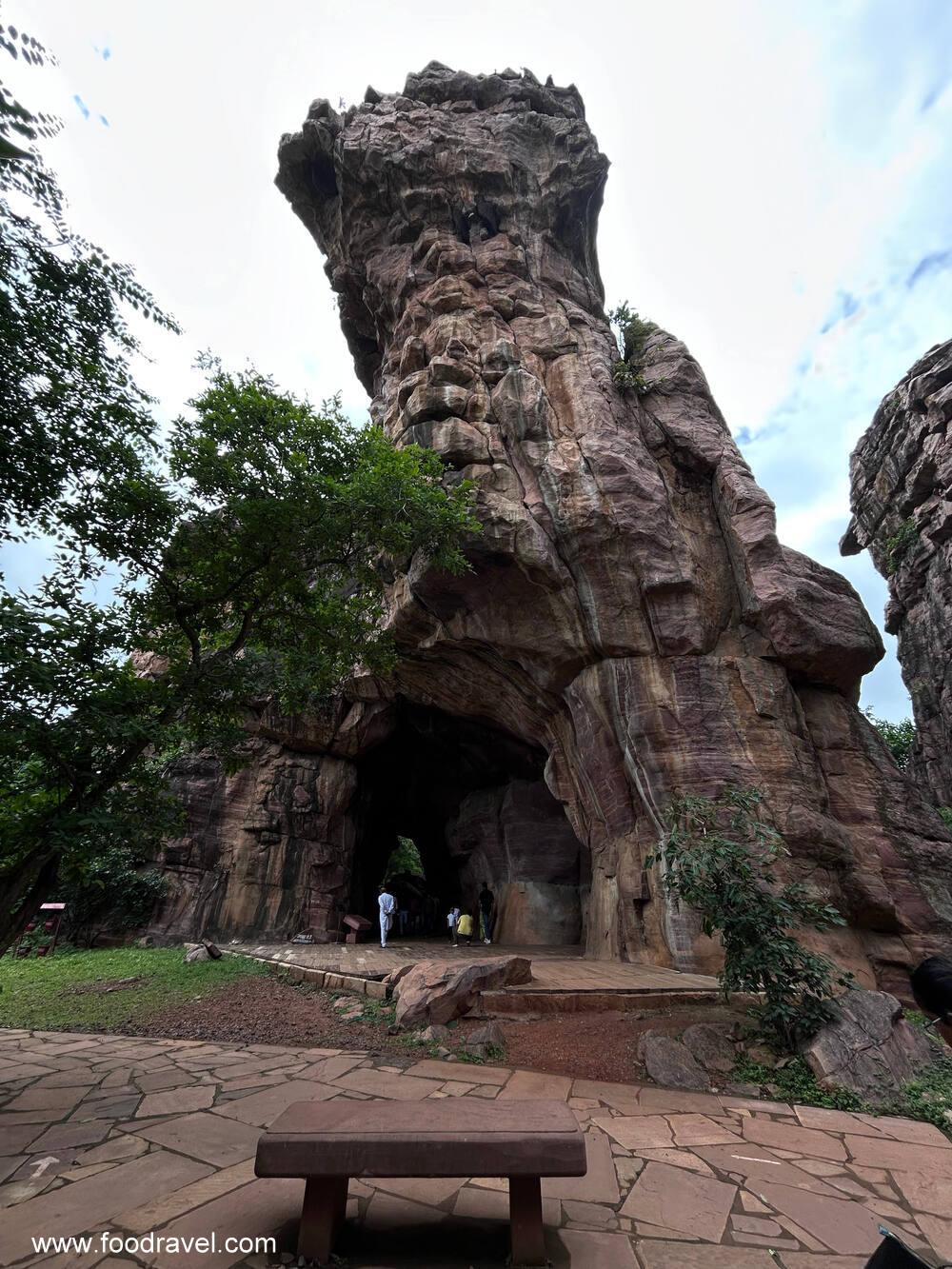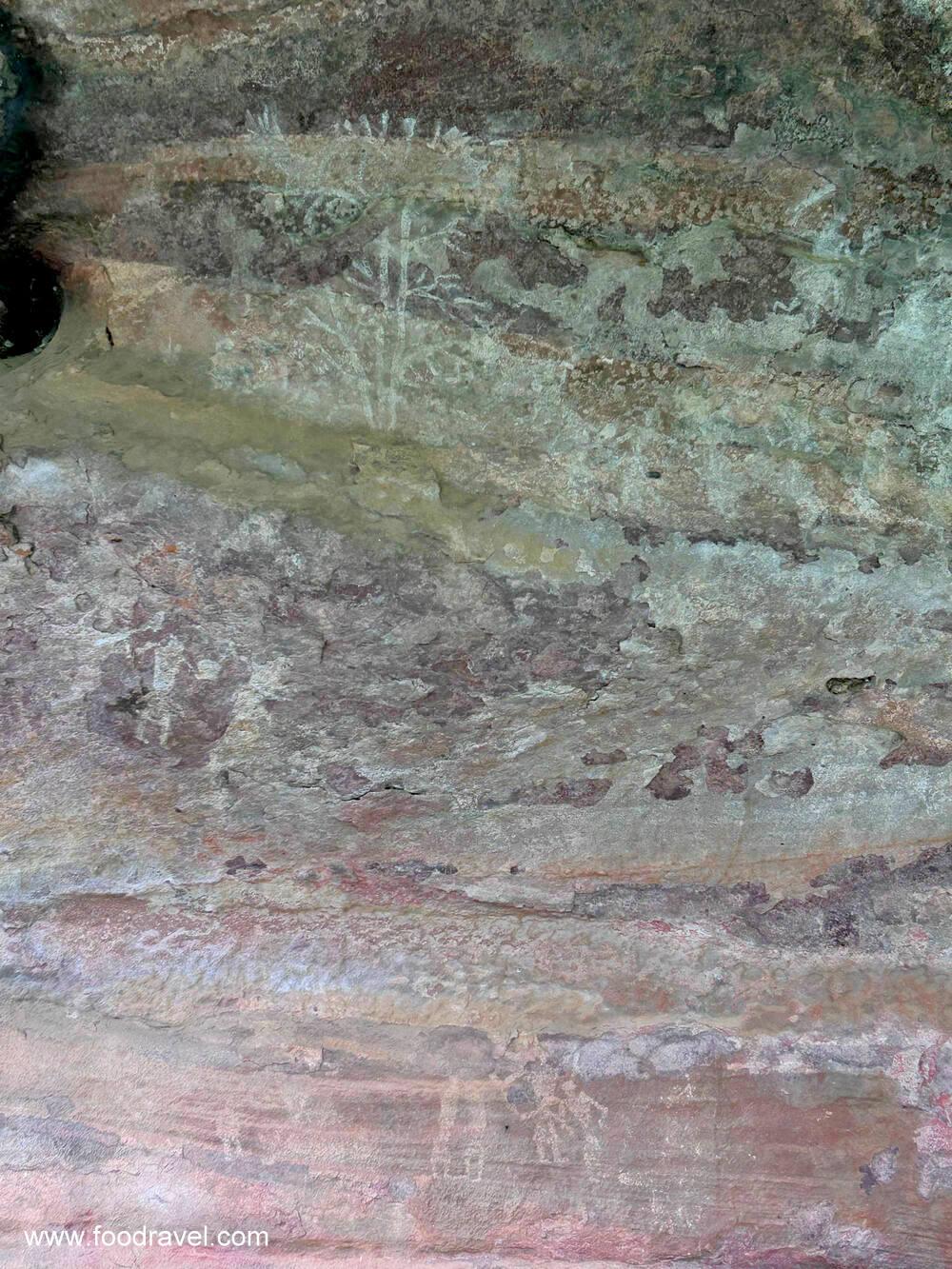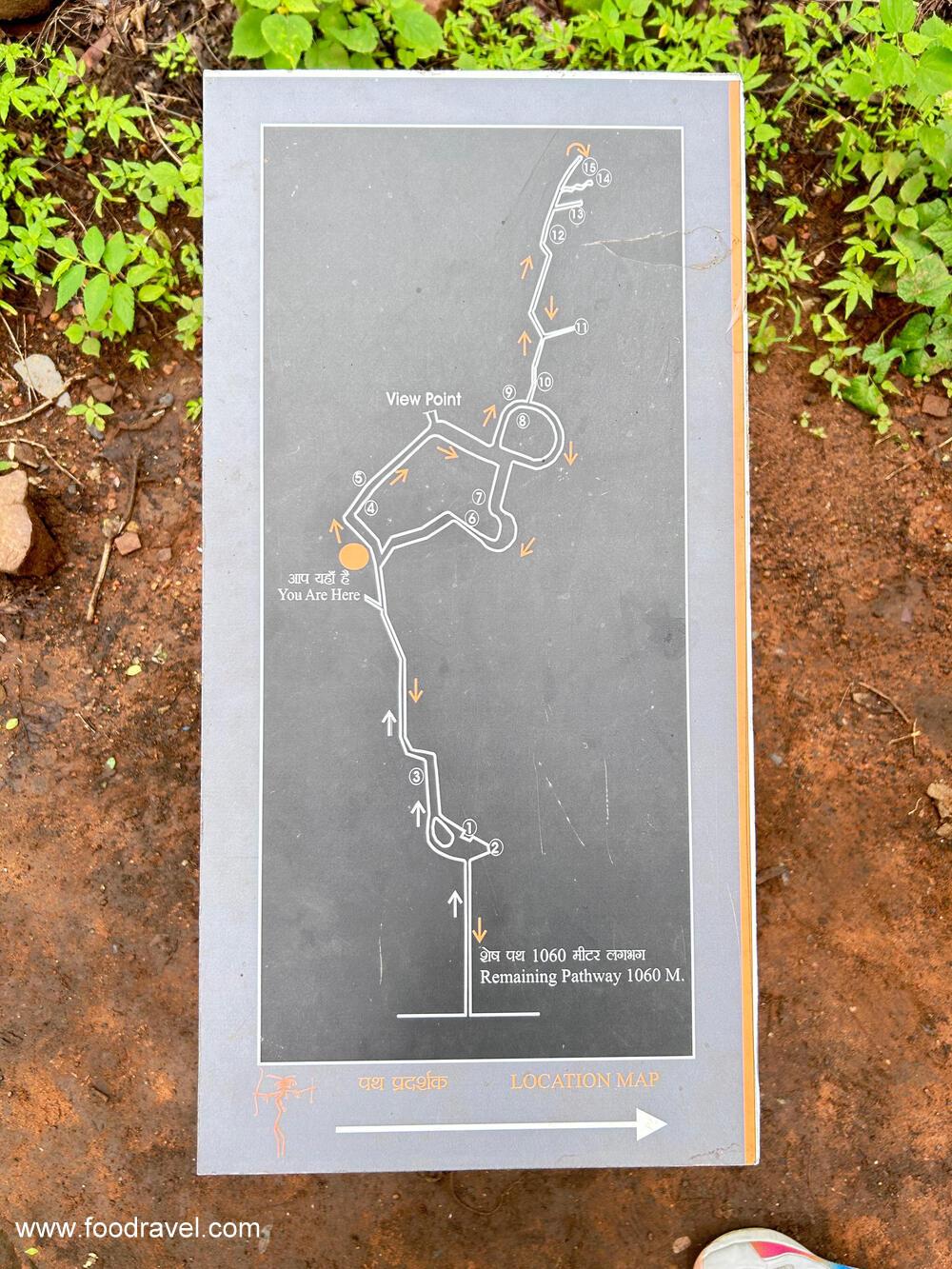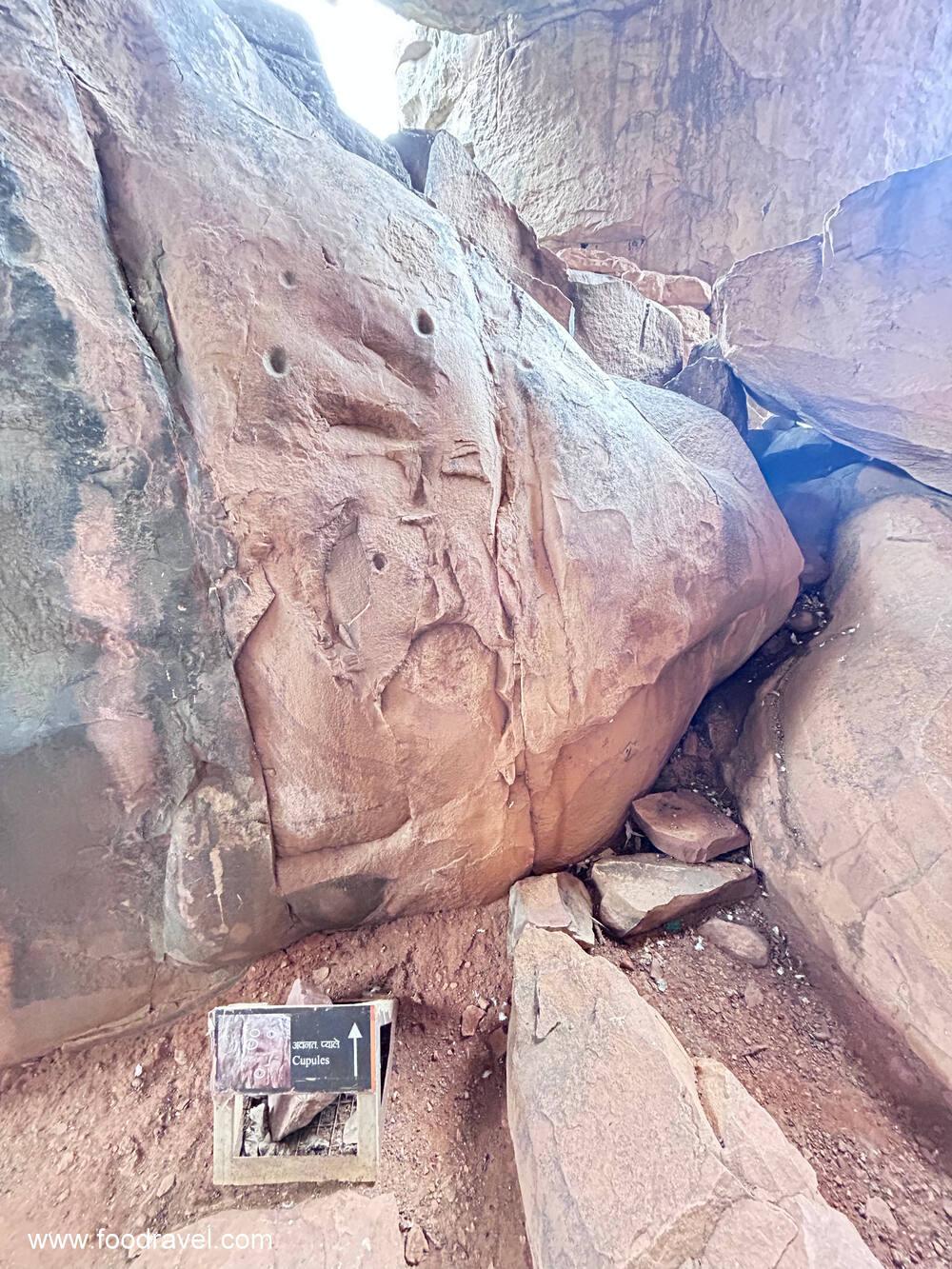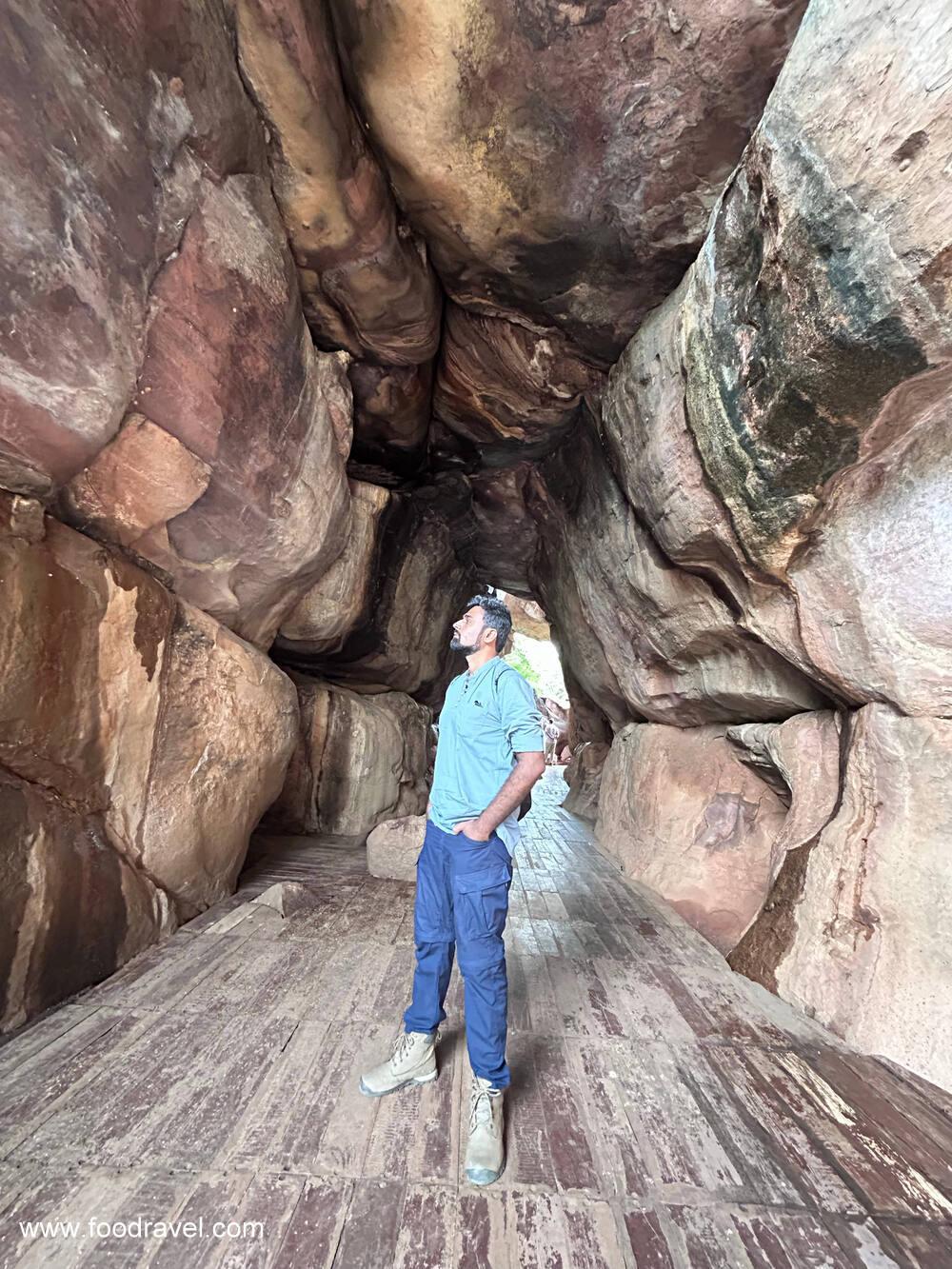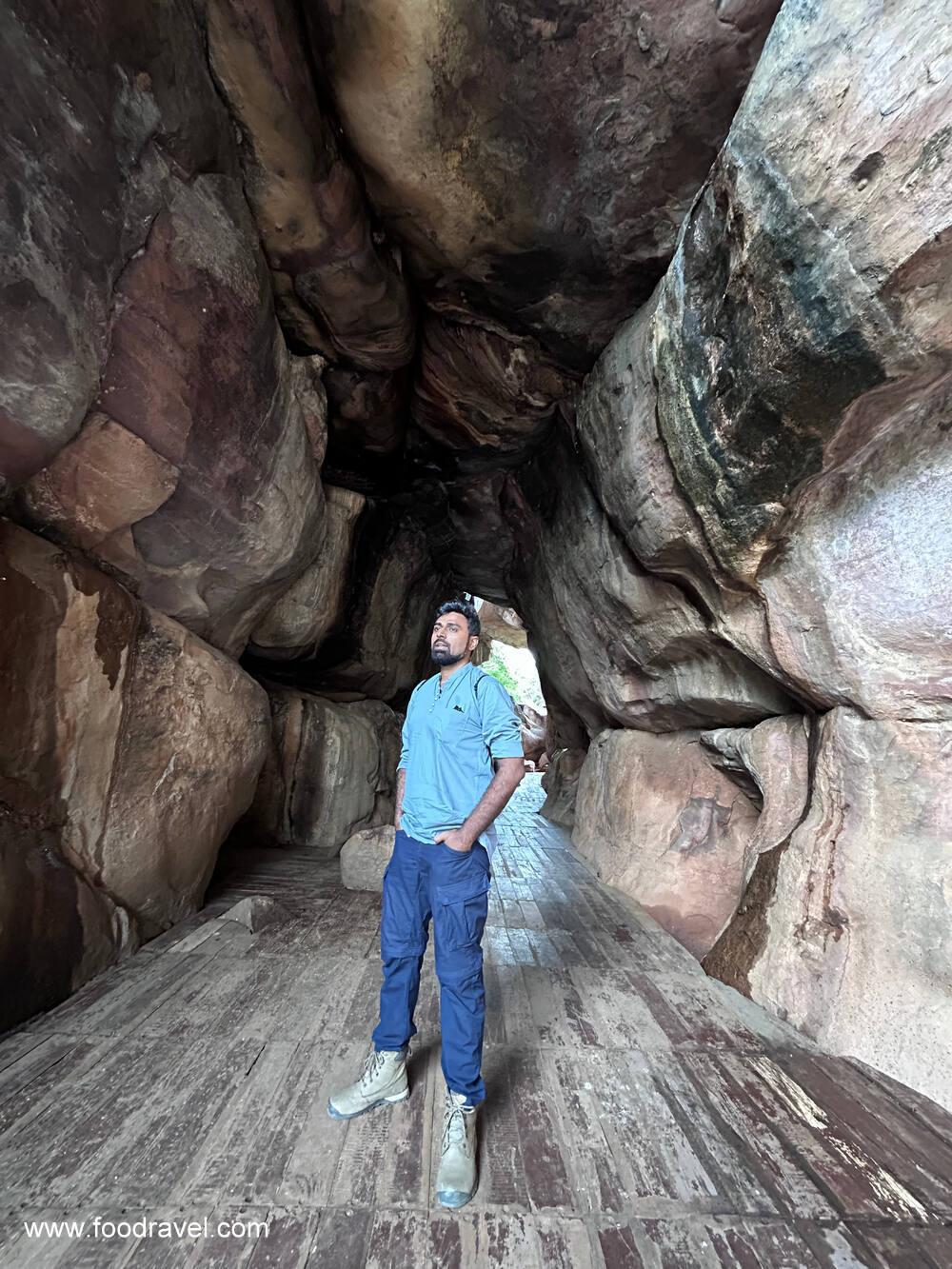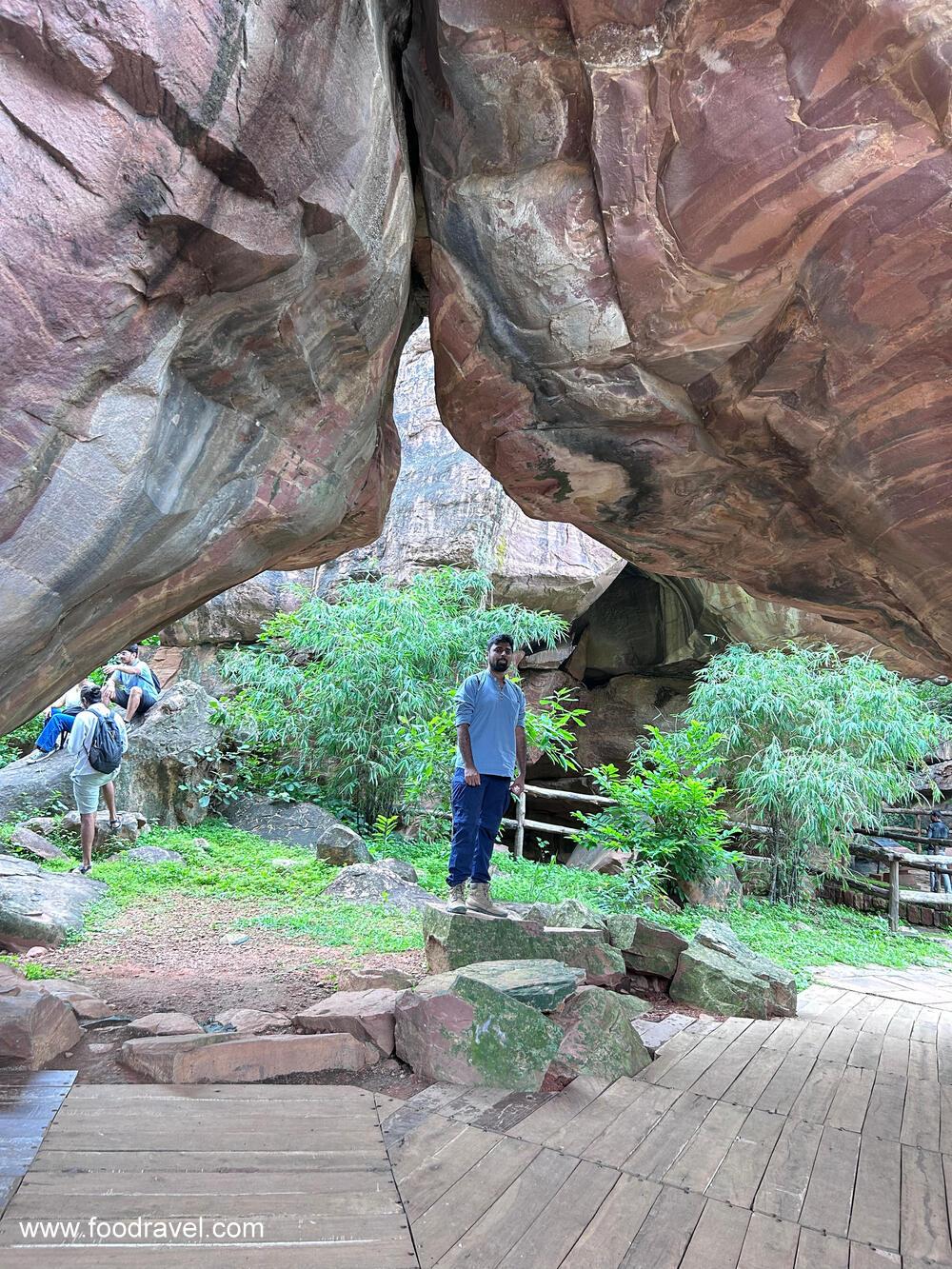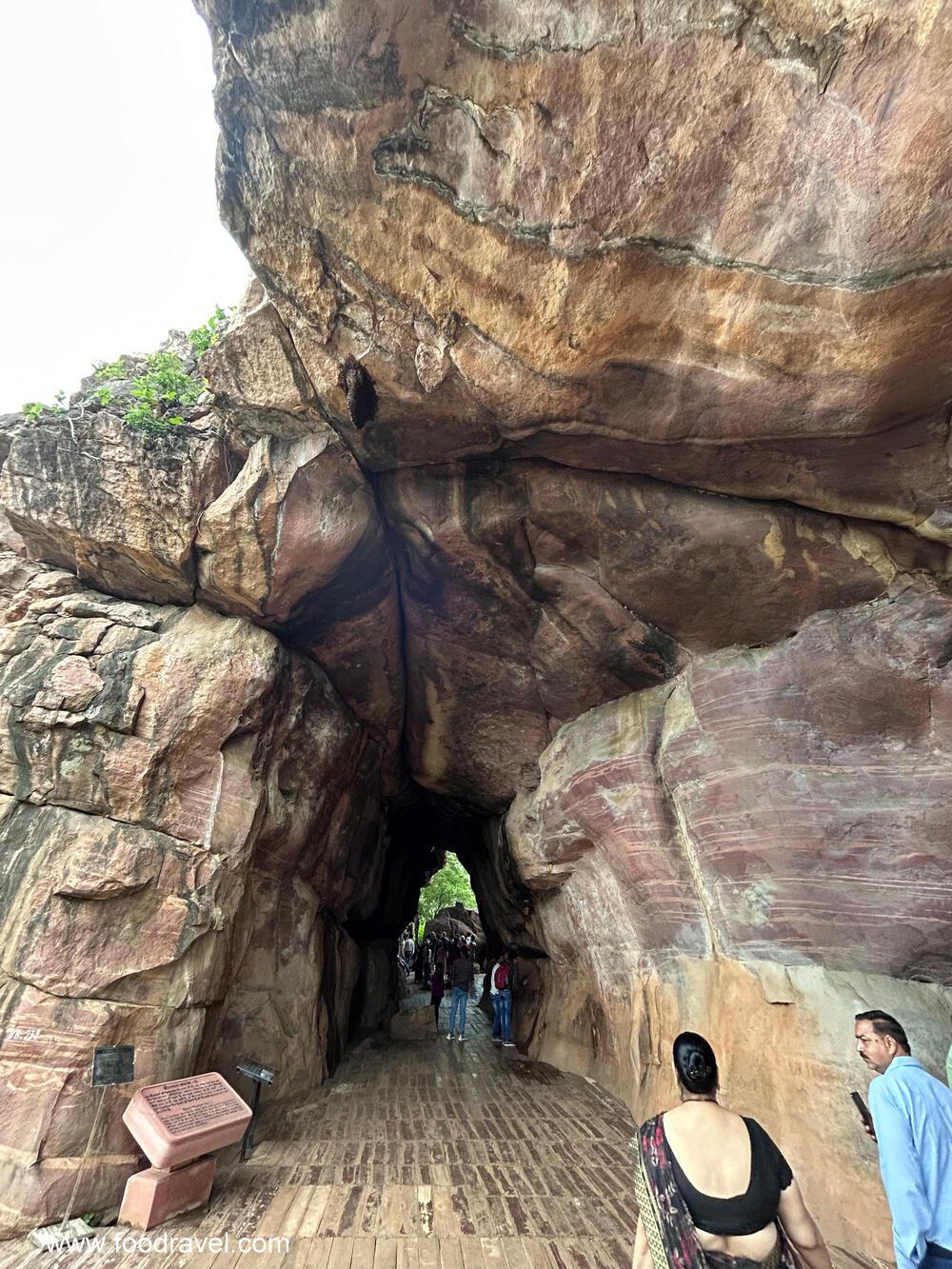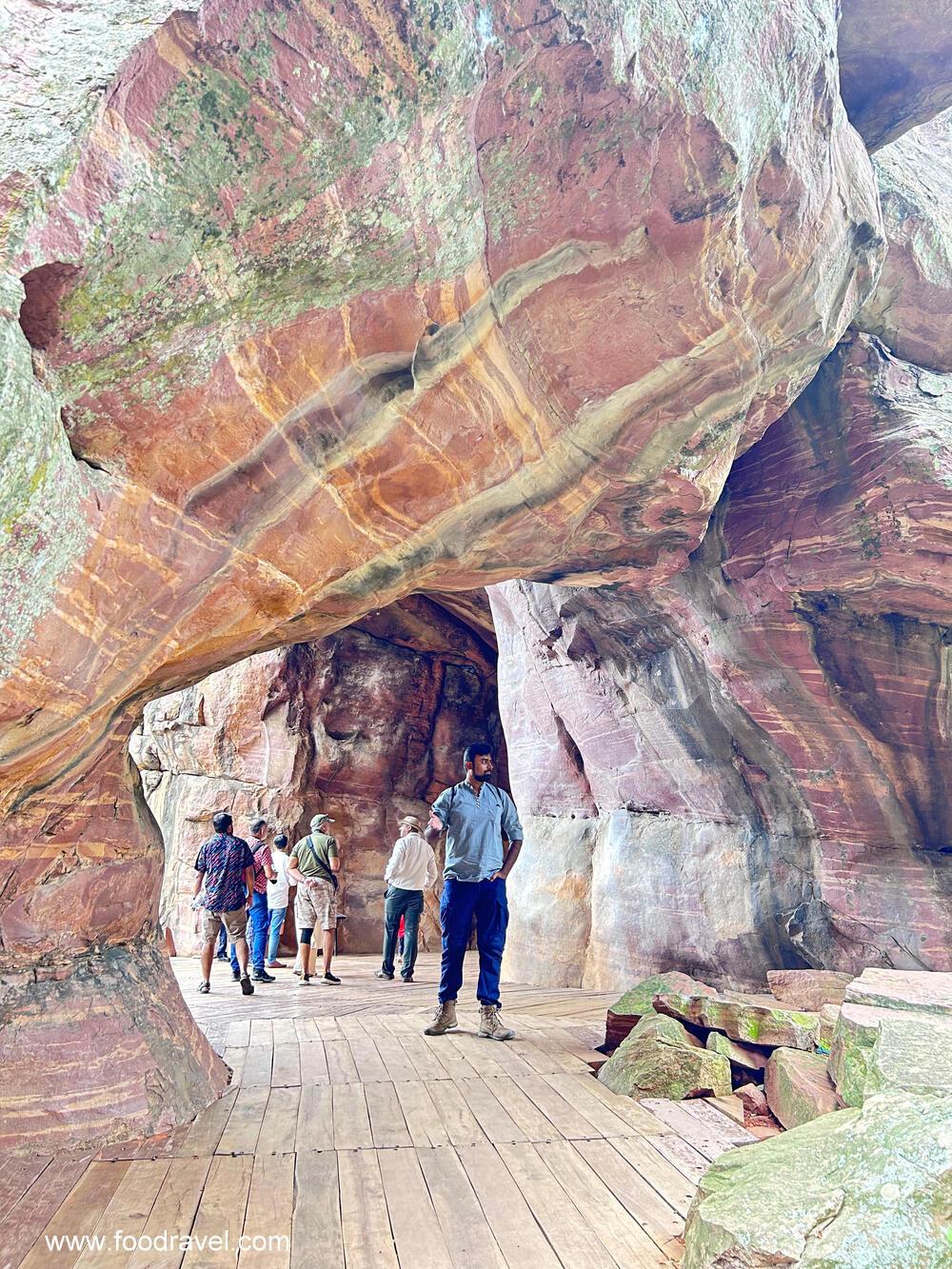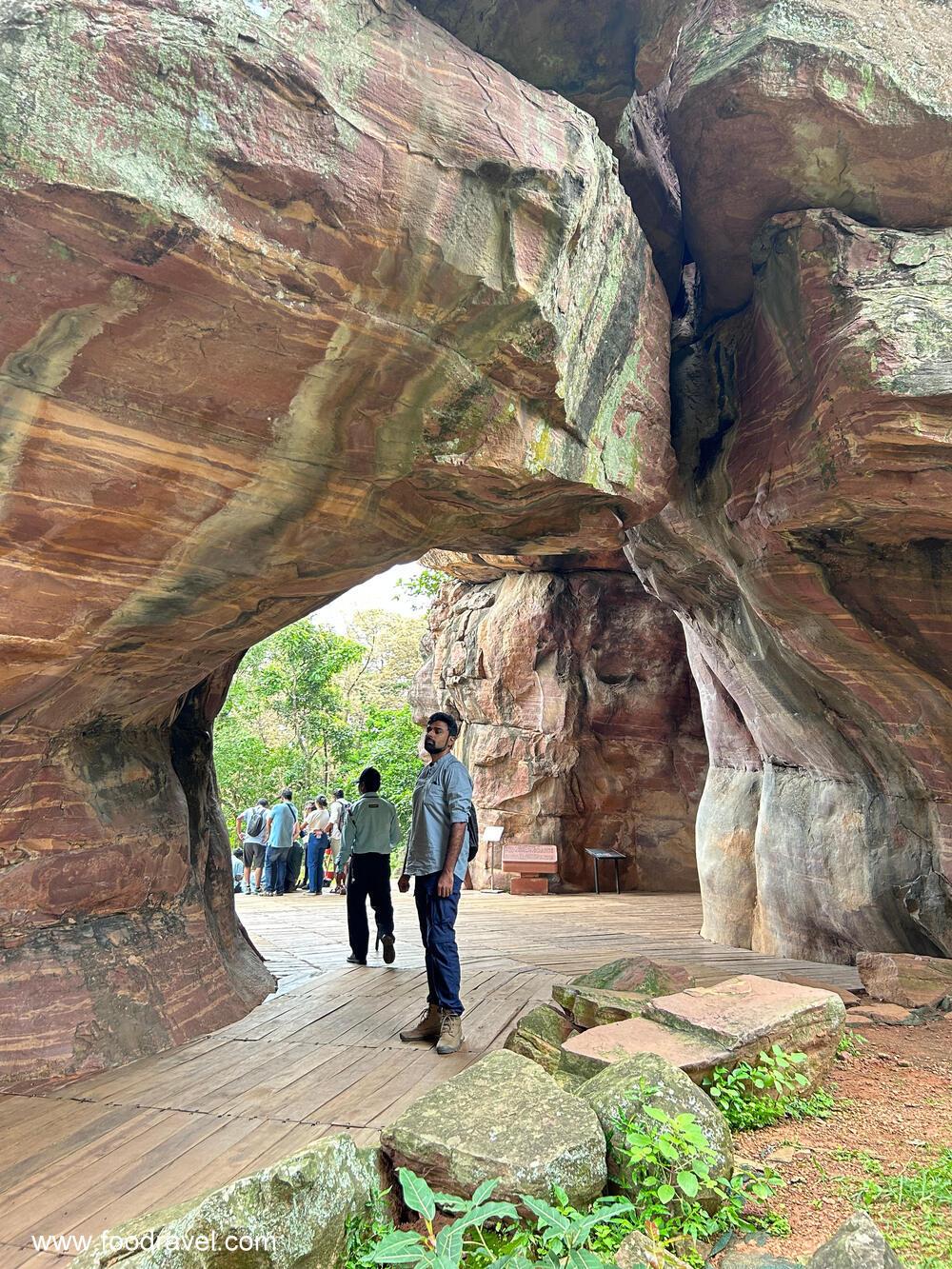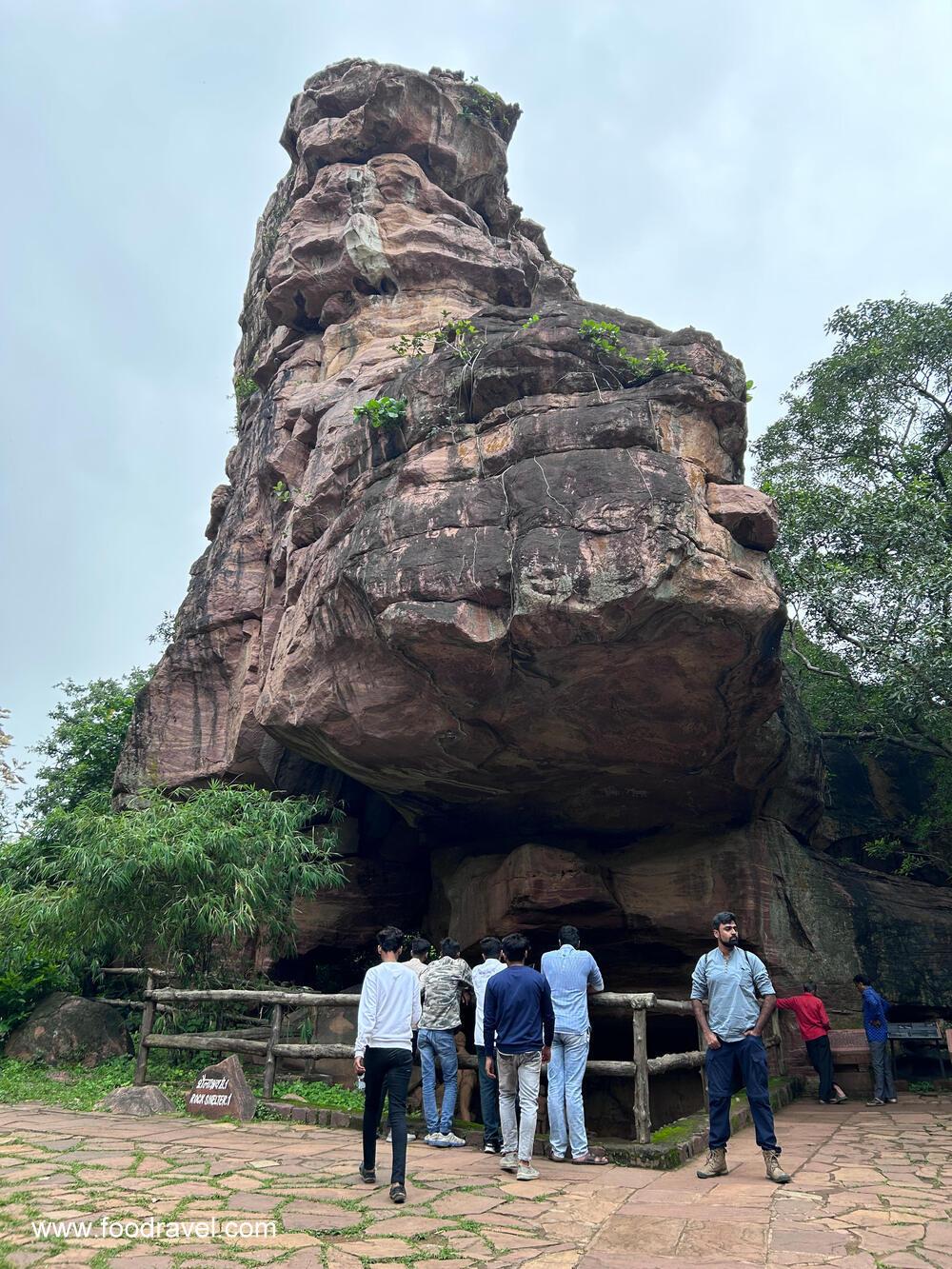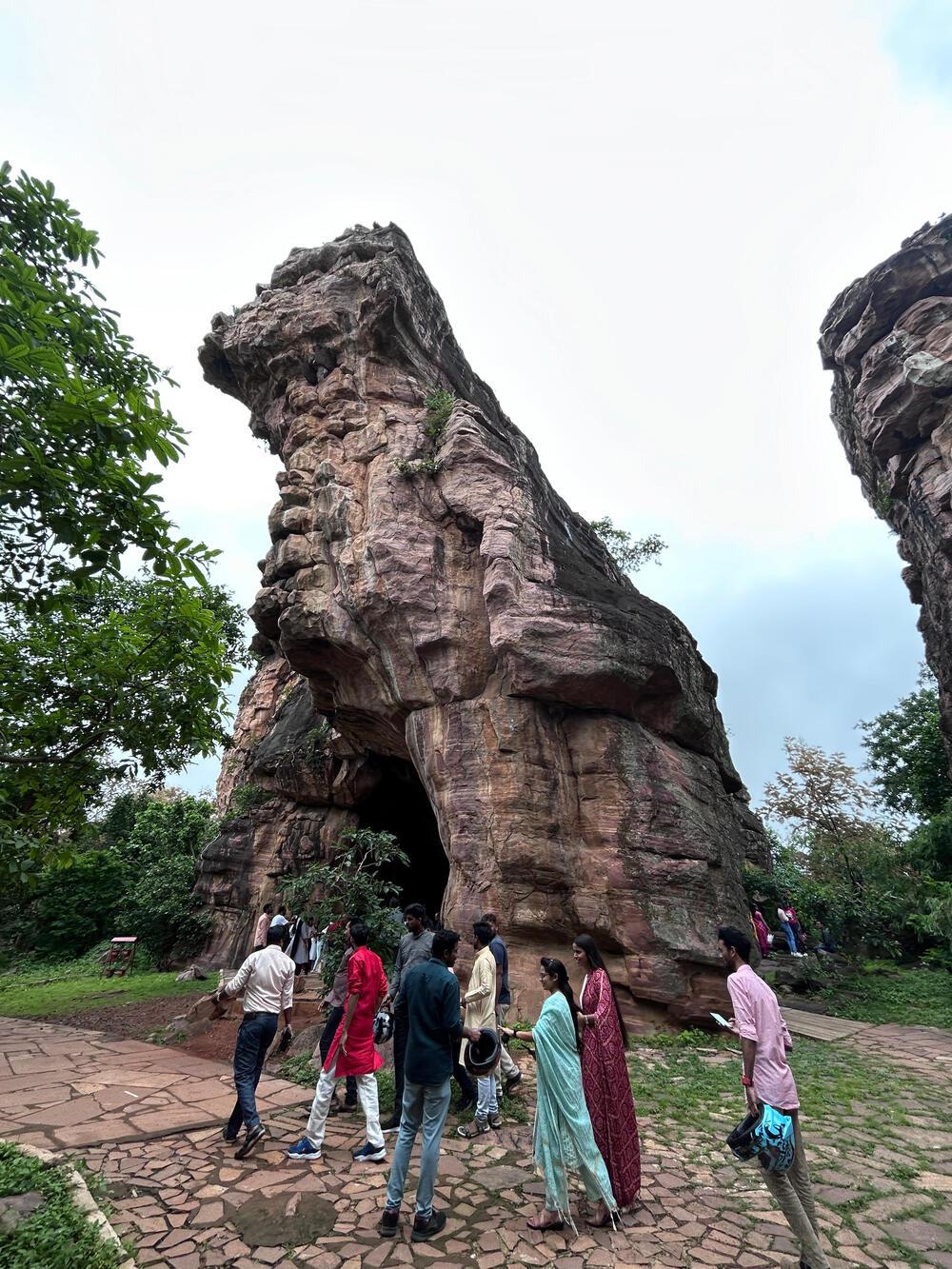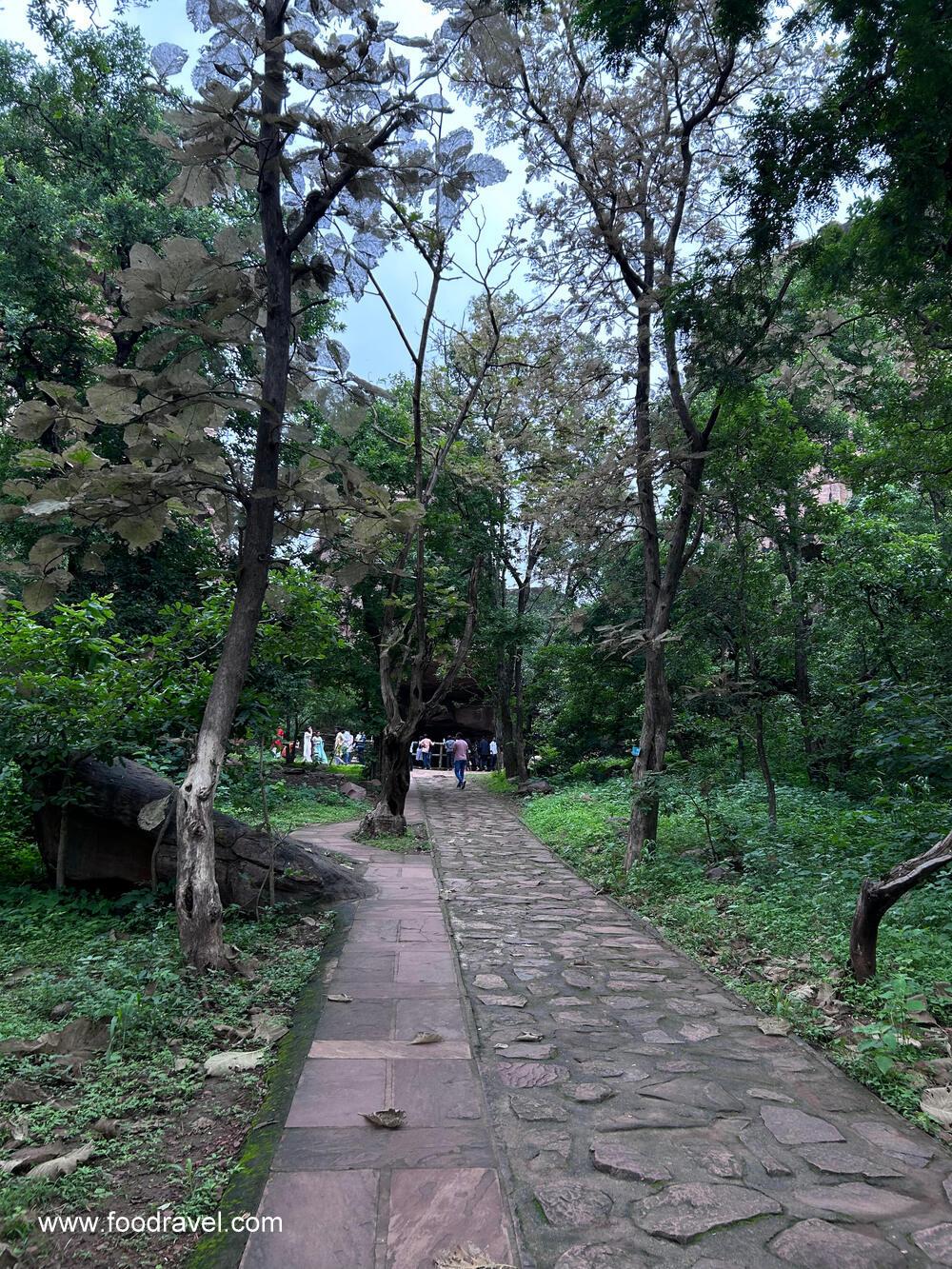Growing up, I read about the Bhimbetka caves in my school history books. As an avid enthusiast of archaeology and anthropology, these ancient sites captivated my imagination. I would often find myself lost in thought, wondering how these caves came into existence, what stories from the past they held, and their significance to humanity today. The Bhimbetka caves were not just historical sites to me; they were portals to a bygone era, sparking a lifelong interest in uncovering the mysteries of human history and the evolution of our civilizations. Their enduring allure continues to inspire my passion for the ancient world.
It has always been my dream to visit a site with immense archaeological and anthropological significance, a place that illuminates our past. The Bhimbetka caves perfectly embodied this dream. Although I wasn’t aware of this remarkable site when I planned my trip to Bhopal in August 2023, discovering the caves turned out to be a highlight of my visit. The experience of seeing the ancient paintings and learning about their history in person was truly captivating, making my trip to Bhopal even more memorable.
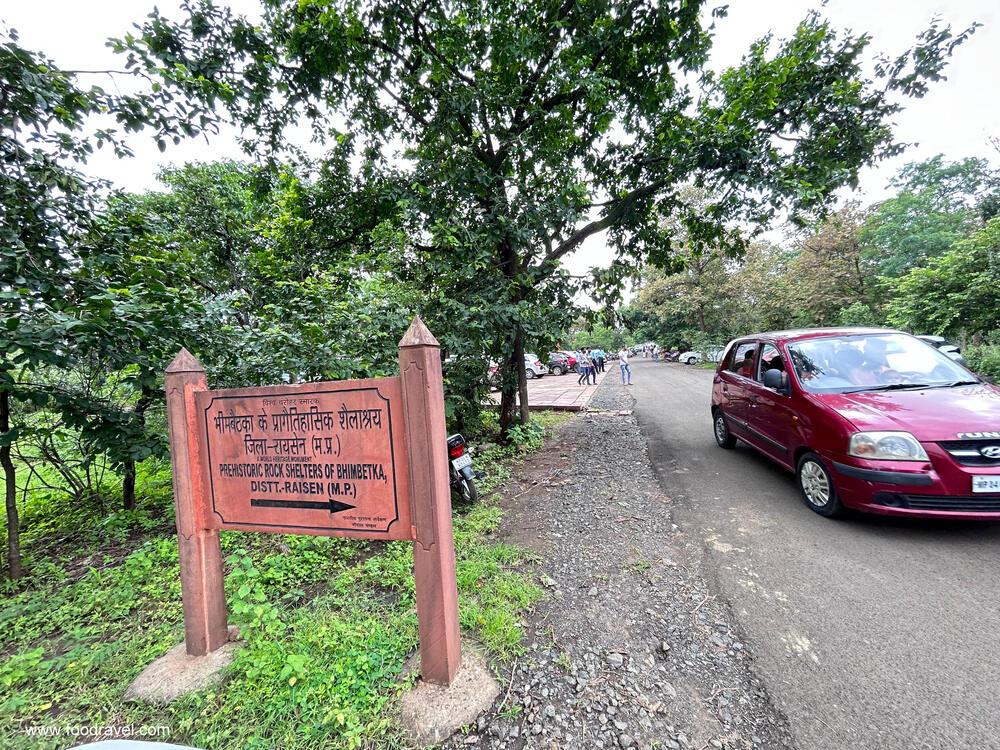
Upon checking into my AirBnB, which I had booked online, the host excitedly mentioned the Bhimbetka caves. I was completely thunderstruck. Discovering that such a significant archaeological site was nearby felt like a serendipitous twist in my travel plans. Visiting rock shelters had long been on my to-do list, and this was the perfect opportunity to experience it. The prospect of exploring the ancient caves and their historical significance ignited my inner Indiana Jones. What started as a routine check-in turned into a thrilling adventure, adding an unexpected but exciting dimension to my trip to Bhopal.
The Bhimbetka rock shelters are a premier archaeological site located in central India, renowned for their rich history spanning from the Paleolithic and Mesolithic periods through to the historic era. Situated in the Raisen District of Madhya Pradesh, approximately 45 kilometers southeast of Bhopal, this UNESCO World Heritage Site extends across seven hills and encompasses over 750 rock shelters spread over a 10-kilometer area.
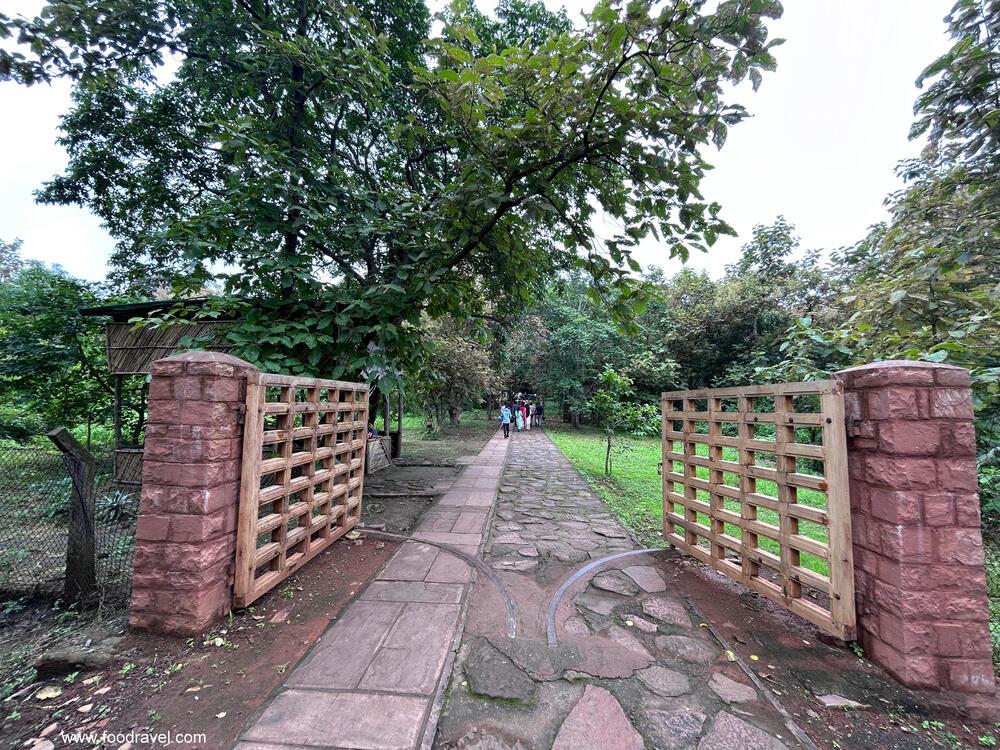

The significance of Bhimbetka lies in its extensive evidence of early human life and cultural evolution. Archaeological findings indicate that the site was inhabited more than 100,000 years ago, marking it as one of the earliest known human settlements in India. The rock shelters reveal a transition from hunter-gatherer societies to more settled agricultural communities and showcase early expressions of spirituality and cultural practices.
Among the most notable features of Bhimbetka are its prehistoric cave paintings, some of which date back to around 10,000 BCE, corresponding to the Mesolithic period in India. These paintings depict a wide range of subjects, including various animals, hunting scenes, and early evidence of dance. Additionally, later artworks portray warriors on horseback, suggesting a continuity of cultural and artistic development into the Bronze Age.
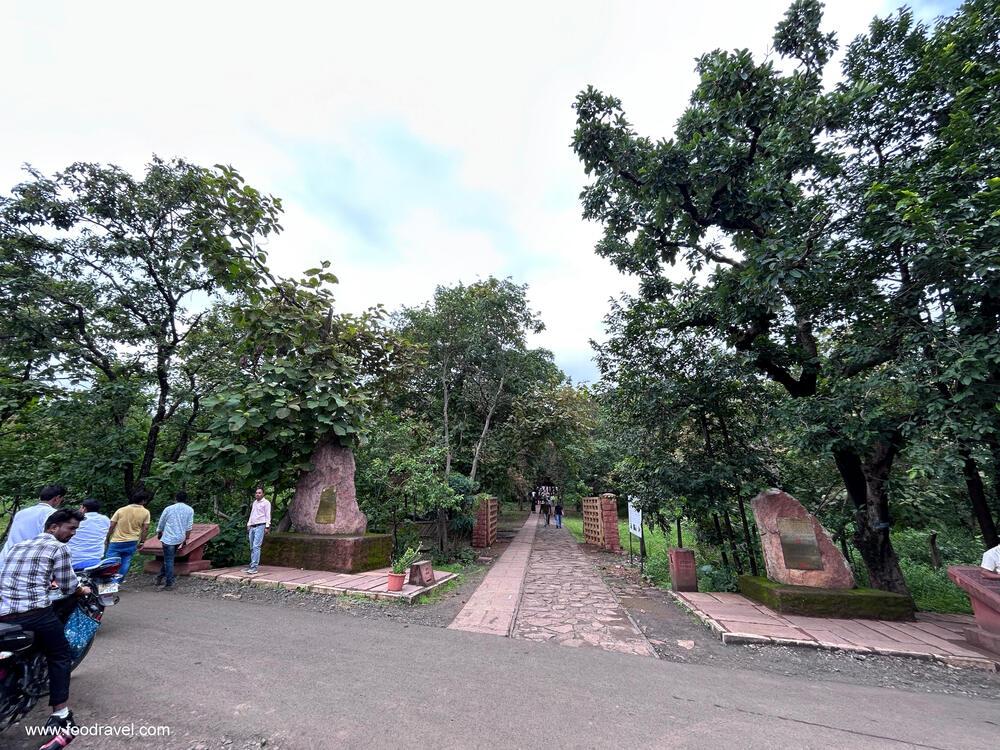
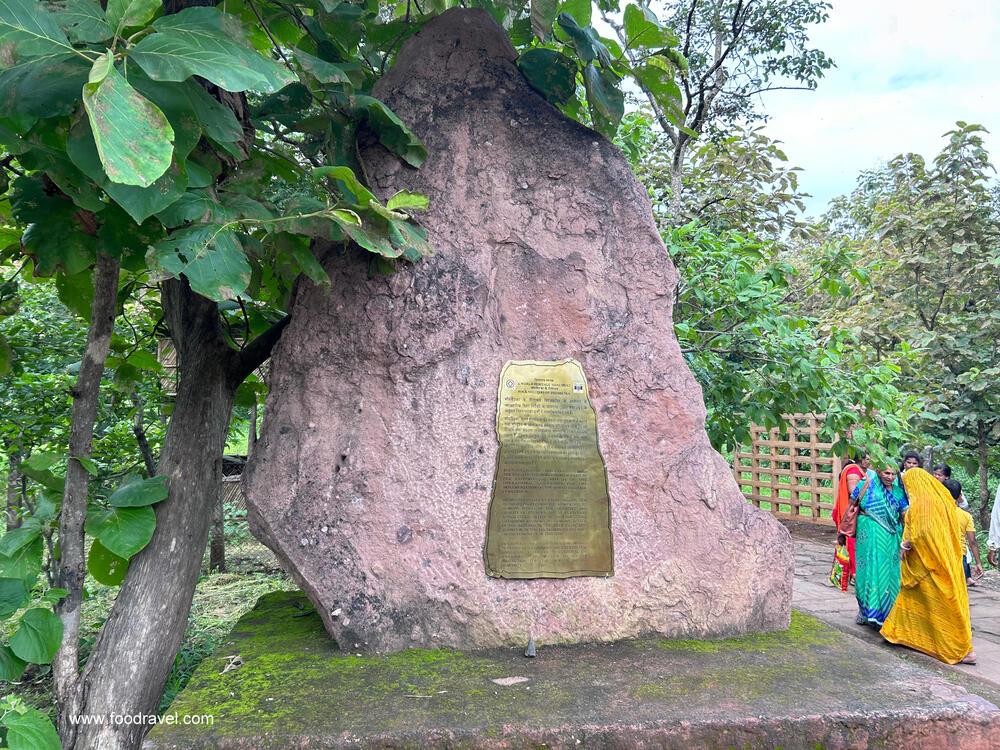
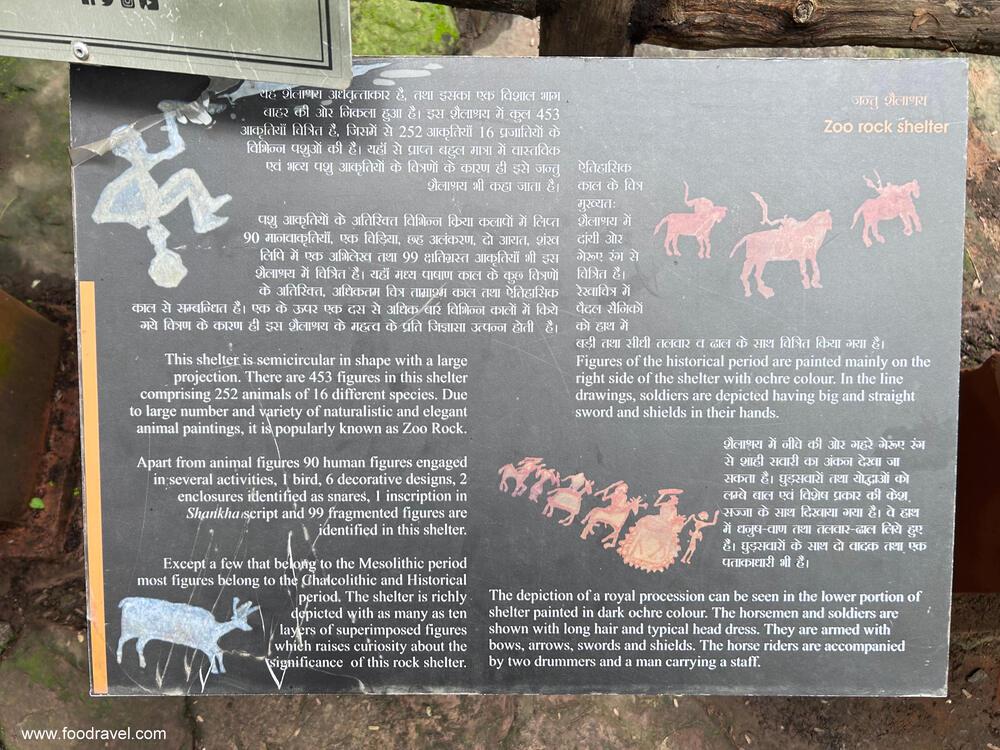
The Bhimbetka site is distinguished by its status as the oldest-known rock art location in India and is recognized as one of the largest and most significant prehistoric complexes globally. The rock shelters are situated within the Ratapani Wildlife Sanctuary, embedded in sandstone rocks at the southern edge of the Vindhya Range. The surrounding landscape includes successive ranges of the Satpura hills to the south.
The site comprises seven prominent hills: Vinayaka, Bhonrawali, Bhimbetka, Lakha Juar (east and west), Jhondra, and Muni Babaki Pahari. Each of these hills hosts a variety of rock shelters that provide valuable insights into the lives and cultures of early human societies in the region. Declared a protected area under Indian laws in 1990 and designated a UNESCO World Heritage Site in 2003, the Bhimbetka rock shelters continue to offer an invaluable glimpse into the prehistoric past, reflecting the artistic and cultural achievements of ancient civilizations.
Unveiling the Ancient Mysteries: A Historical Overview of the Bhimbetka Caves
In 1888, British India official W. Kincaid first brought attention to Bhimbetka through a scholarly paper. Drawing from information provided by local adivasis (tribals) about Bhojpur Lake, Kincaid described Bhimbetka as a significant site in Hinduism. However, it was V. S. Wakankar, an Indian archaeologist, who truly unveiled its prehistoric importance. In 1957, Wakankar, having observed similarities between Bhimbetka’s rock formations and those in Spain and France, led an archaeological expedition to the site, revealing its vast array of prehistoric rock shelters.
The 1970s marked the discovery of the full scale and significance of Bhimbetka’s rock shelters. More than 750 rock shelters have since been identified, with 243 in the Bhimbetka group and 178 in the nearby Lakha Juar group. Excavations and analysis of artifacts, pigments, and rock paintings indicate a continuous human presence from the Stone Age through the late Acheulian to the late Mesolithic period, extending up to the 2nd century BCE. The site is notable for containing the world’s oldest stone walls and floors.
Further research revealed that the raw materials used for certain monoliths at Bhimbetka were sourced from Barkheda. Covering 1,892 hectares, the site was officially protected under Indian law and placed under the management of the Archaeological Survey of India in 1990. Recognizing its global significance, UNESCO designated Bhimbetka as a World Heritage Site in 2003.
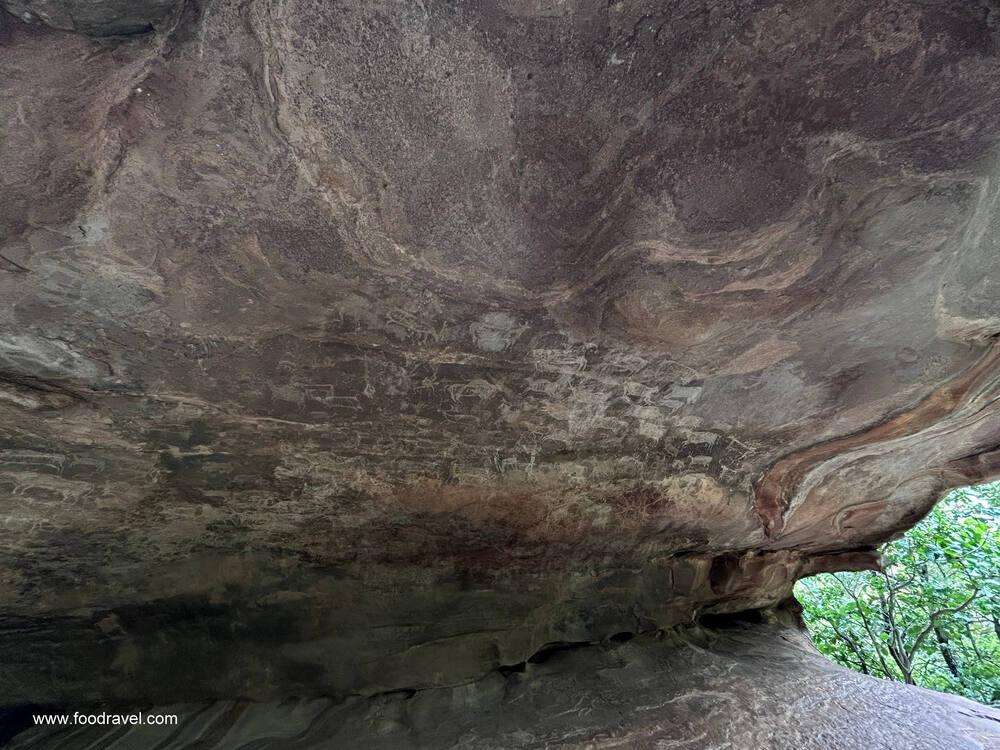
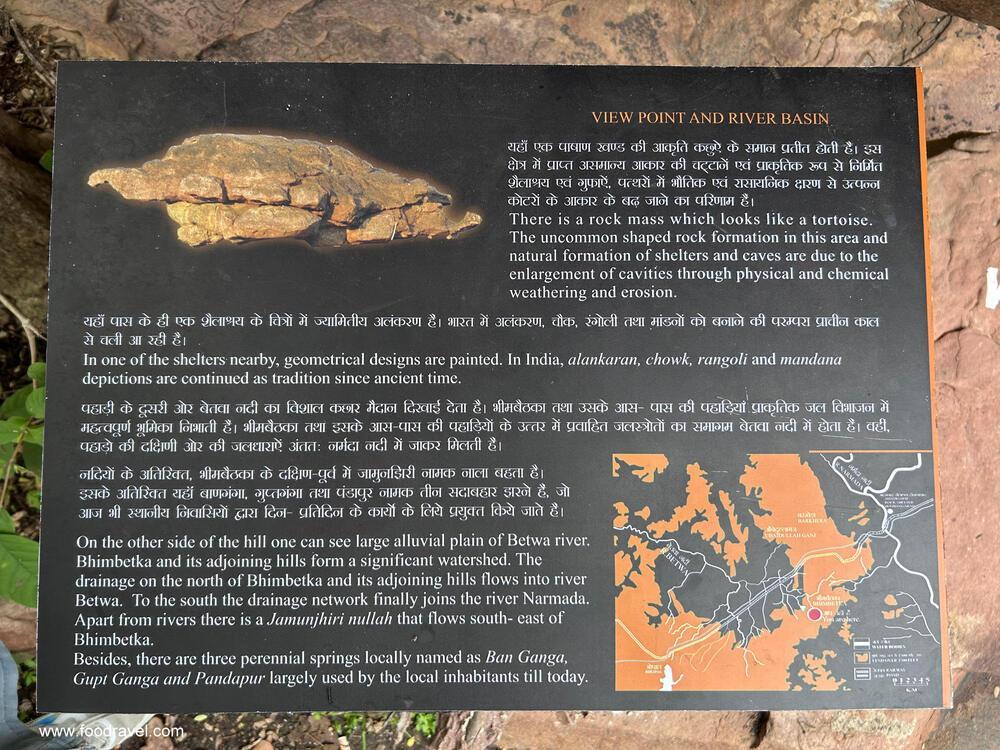
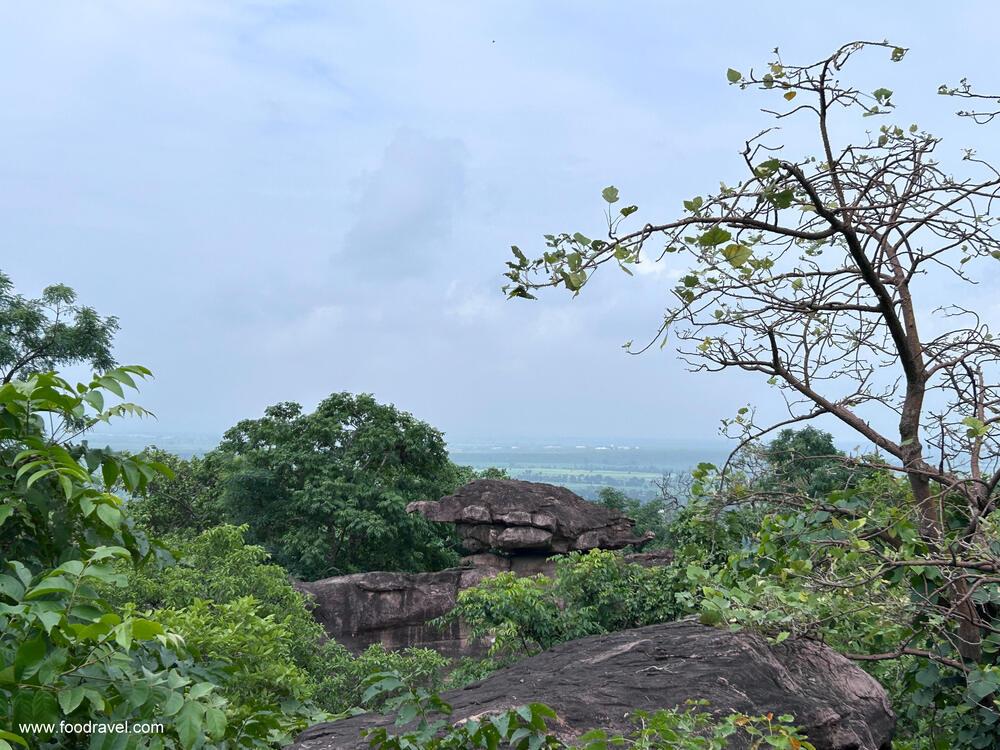
Unveiling the Artistic Legacy: A Comprehensive Overview of Bhimbetka Cave’s Prehistoric Paintings
The Bhimbetka rock shelters are renowned for their extensive and diverse collection of prehistoric paintings, which span a wide range of periods and styles. Some of these paintings date back to 10,000 BCE, though certain geometric figures extend into the medieval period. V. S. Wakankar, a pioneering archaeologist, categorized these artworks into seven distinct periods, with the earliest paintings estimated to be from the Upper Paleolithic era, around 40,000 years ago.
Period I – Upper Paleolithic
This period features linear depictions primarily in green, illustrating scenes of human dancing and hunting. These early artworks provide insight into the social and ritualistic activities of the time.
Period II – Mesolithic
The paintings from this era are more stylized and smaller in scale. They include a variety of motifs such as animals, human figures, and hunting scenes. Detailed representations of weapons like barbed spears, pointed sticks, and bows and arrows are evident. Some scenes are interpreted as tribal conflicts, while others depict communal dances, birds, musical instruments, and domestic life.
Period III – Chalcolithic
In this period, the paintings show a continuation of Mesolithic styles but reflect interactions with the agricultural communities of the Malwa plains. The exchange of goods is apparent, indicating a shift in societal structure and economy.
Period IV & V – Early Historic
These paintings are characterized by schematic and decorative styles, with colors predominantly in red, white, and yellow. They depict riders, religious symbols, and scripts from various periods. Notable themes include yakshas, tree gods, and magical sky chariots, reflecting evolving religious beliefs.
Period VI & VII – Medieval
The artwork from these periods is more geometric and schematic, displaying a decline in artistic refinement. The colors used include black manganese oxides, red hematite, and charcoal, showing a shift in materials and techniques.
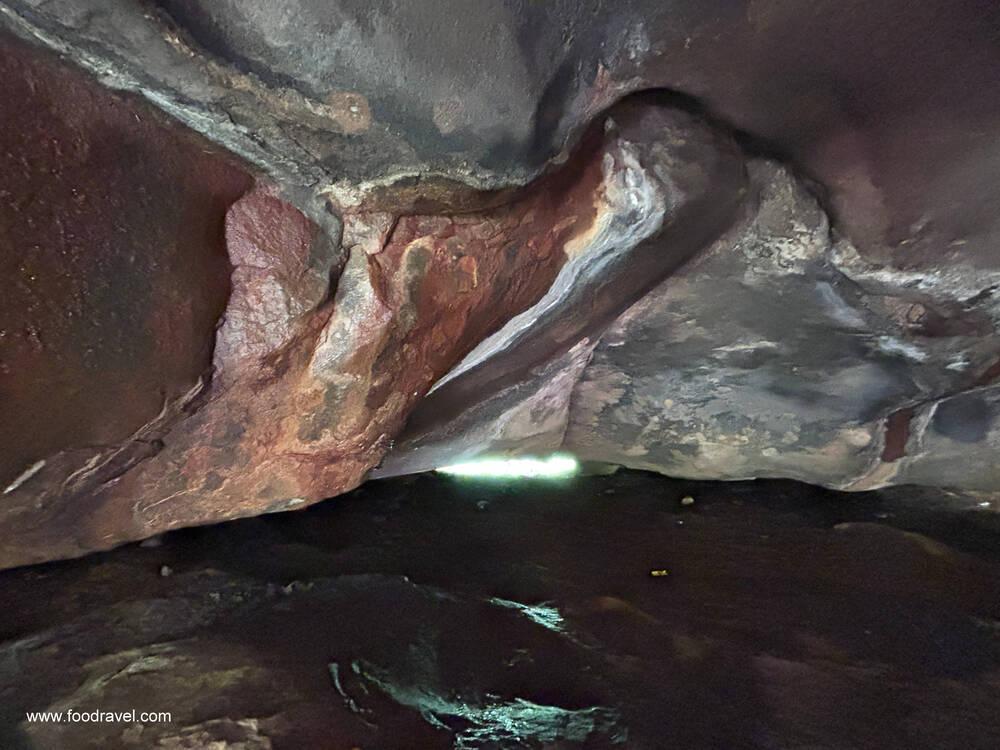
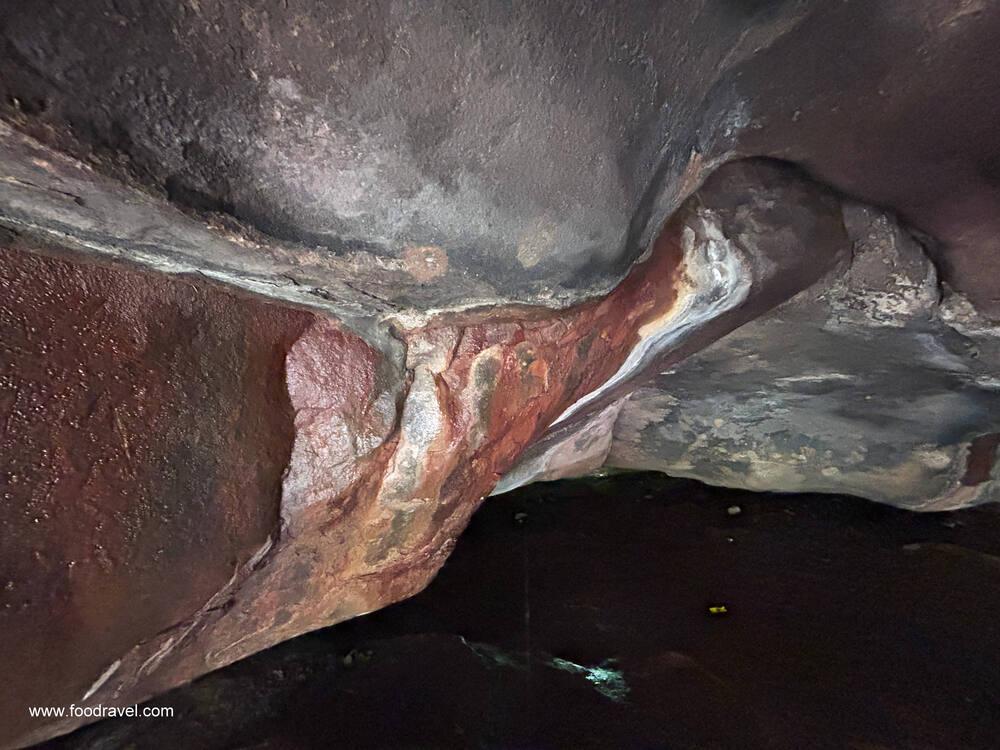
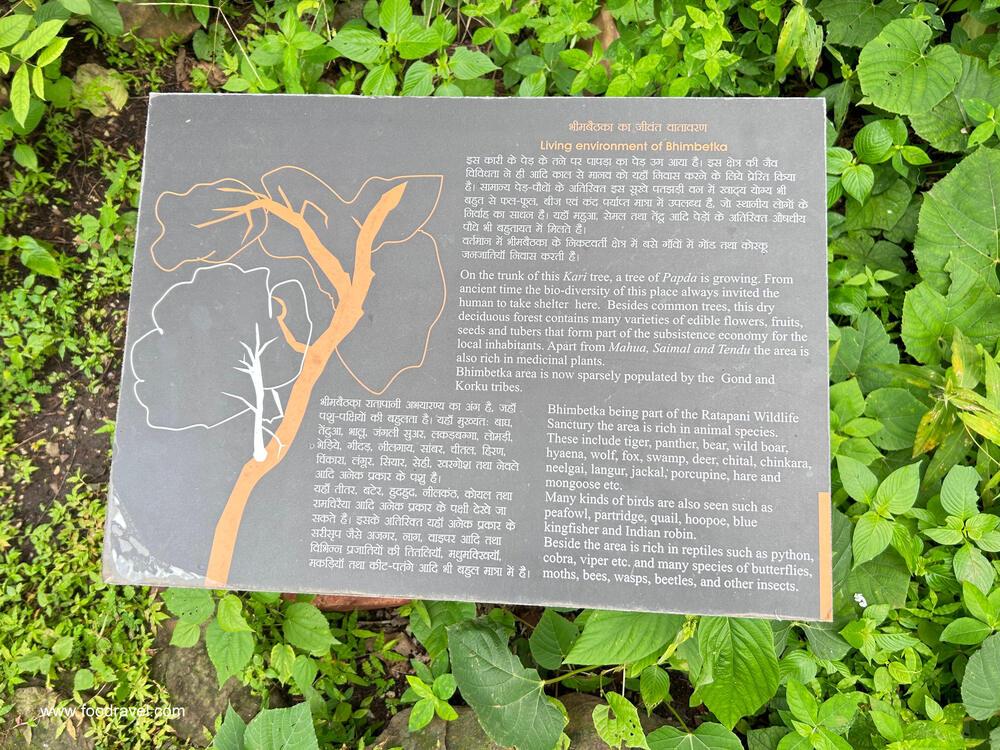
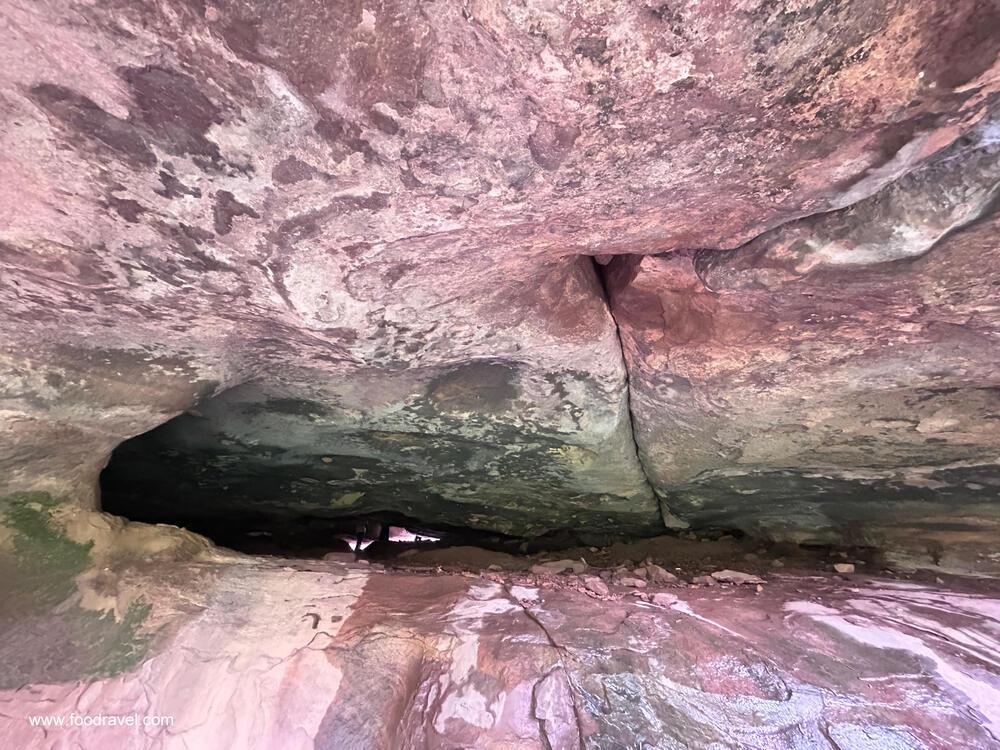
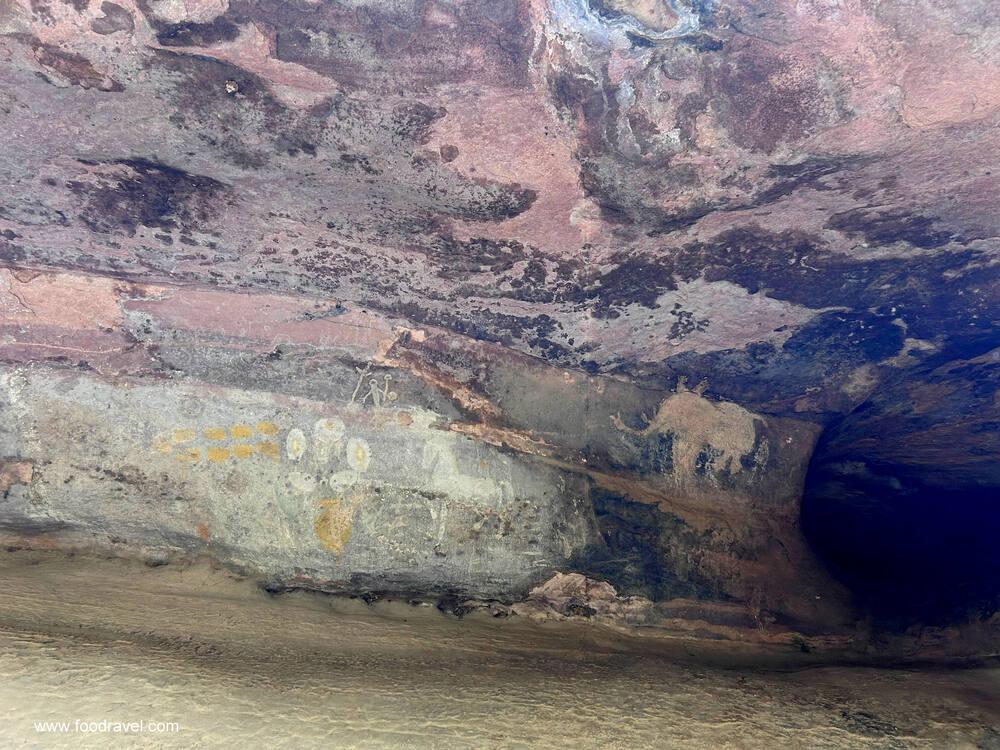
Significant motifs include “Zoo Rock,” featuring elephants, swamp deer, bison, and other animals. Another rock showcases a peacock, a snake, and a deer, while other sites depict hunting scenes with bows, arrows, and swords. One notable painting shows a bison being pursued by hunters, while another portrays horsemen and archers.
Yashodhar Mathpal’s extensive study has identified various animals such as sloth bears, wolves, hyenas, rhinoceroses, and domesticated dogs in these paintings. The artworks are divided into two main groups: depictions of hunters and food gatherers, and representations of warriors and battles. The latter includes scenes of rulers with metal weapons, illustrating the transition to historic times.
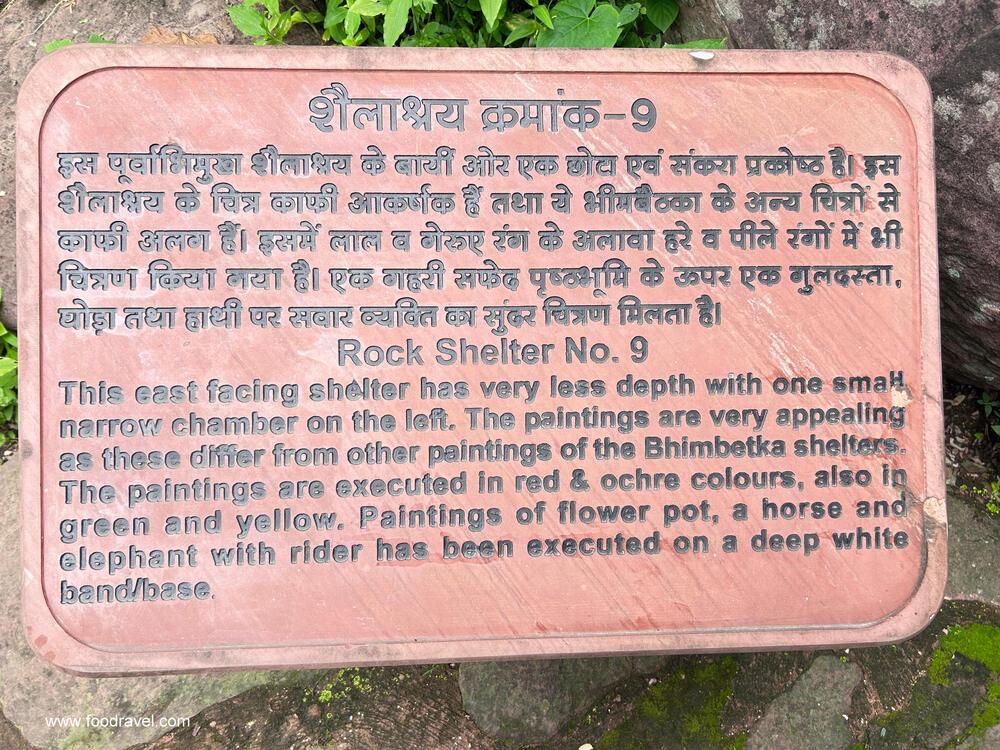
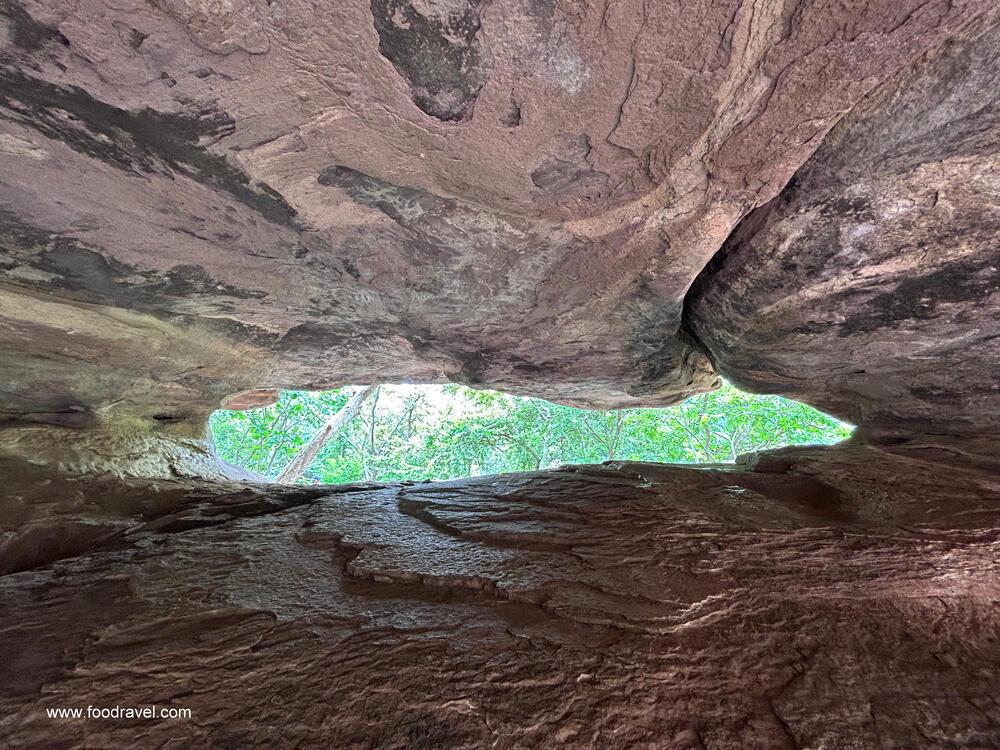
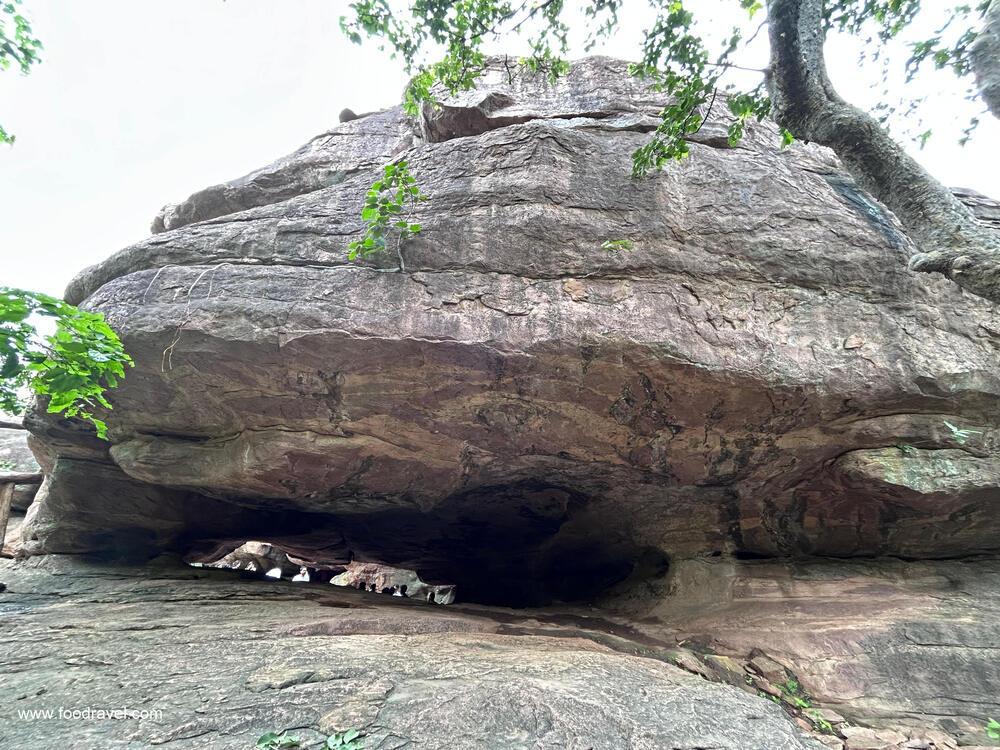
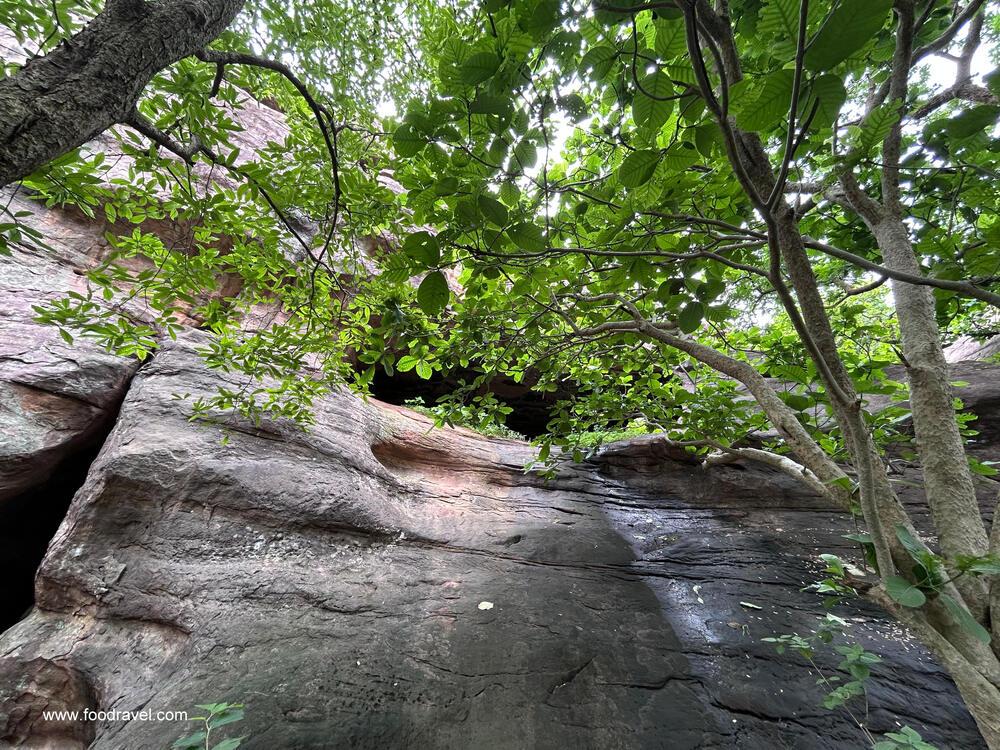
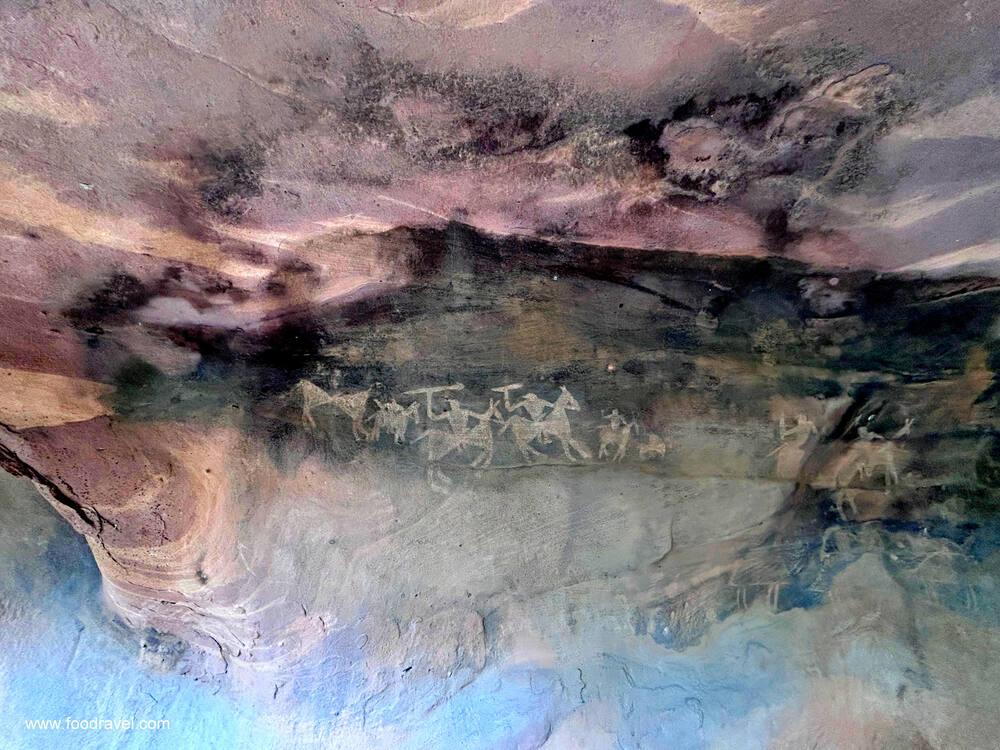
One of the most iconic paintings, known as “Nataraj,” depicts a man with a trident-like staff dancing. It is estimated that at least 100 rock shelters may have lost their paintings to erosion over time.
These rock shelters not only offer a window into the artistic and cultural evolution of ancient societies but also highlight the rich historical tapestry of human civilization in India.
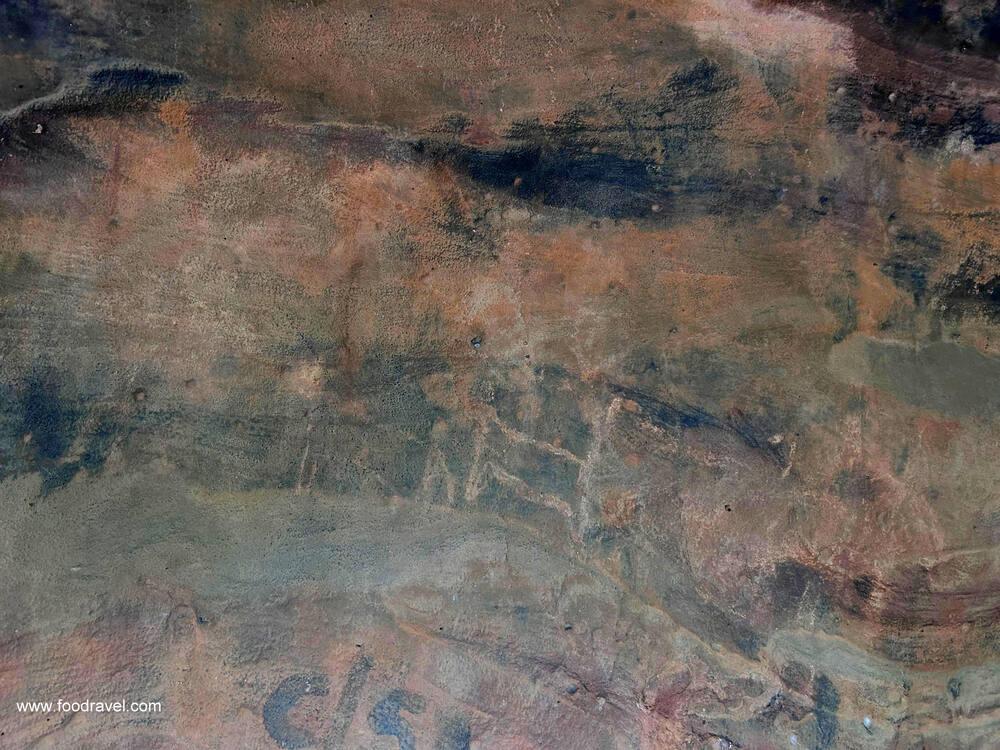
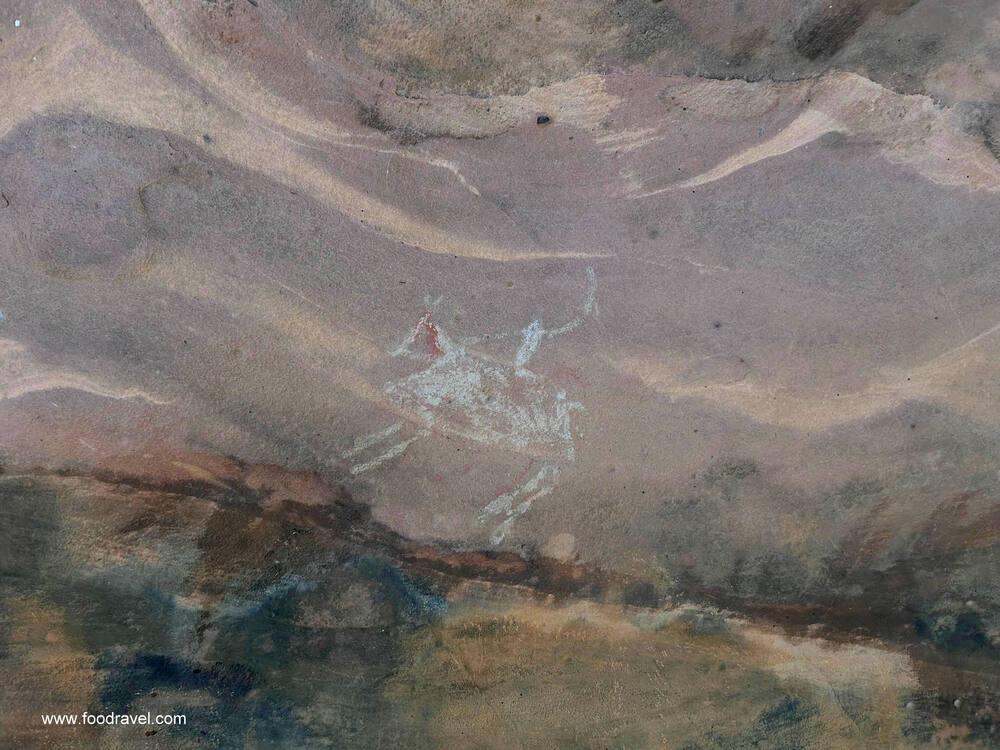
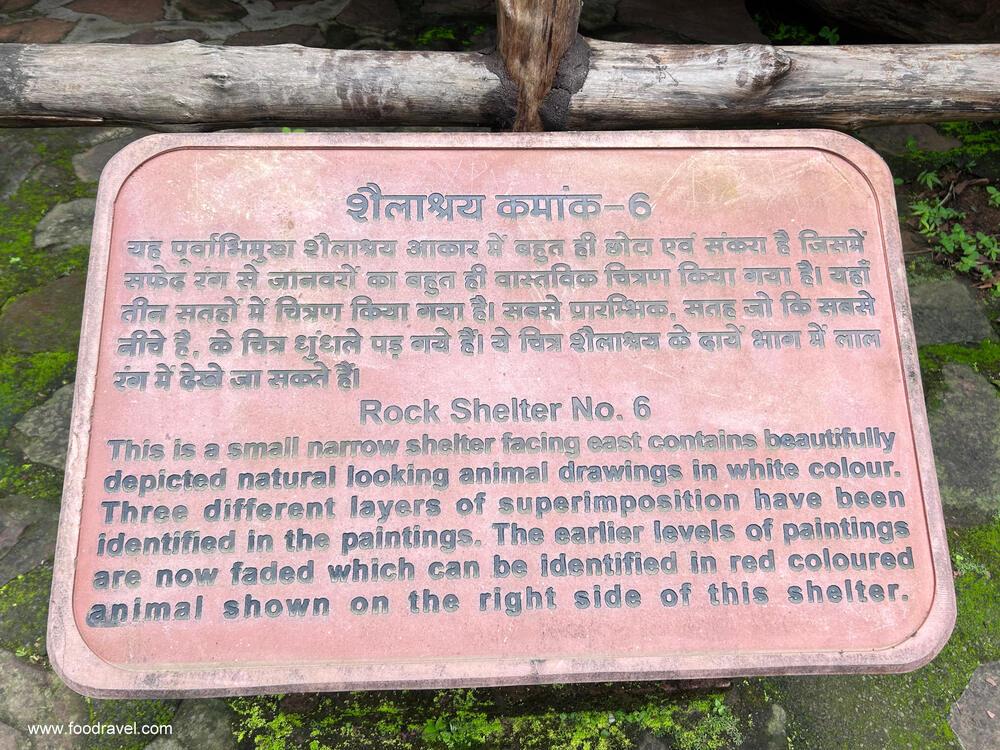
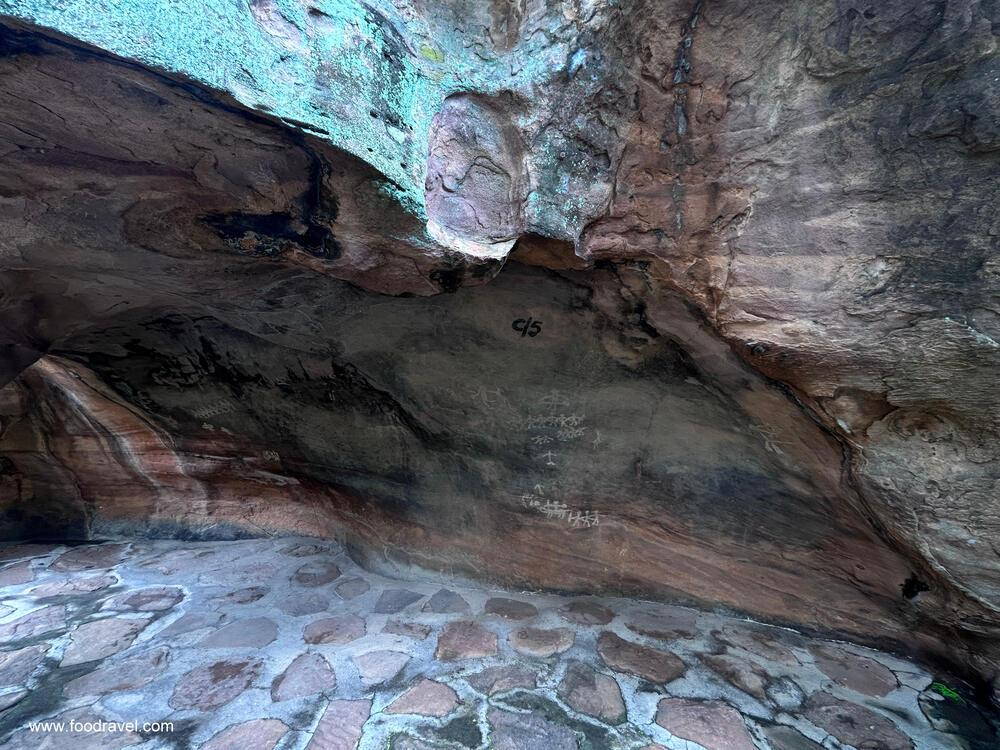
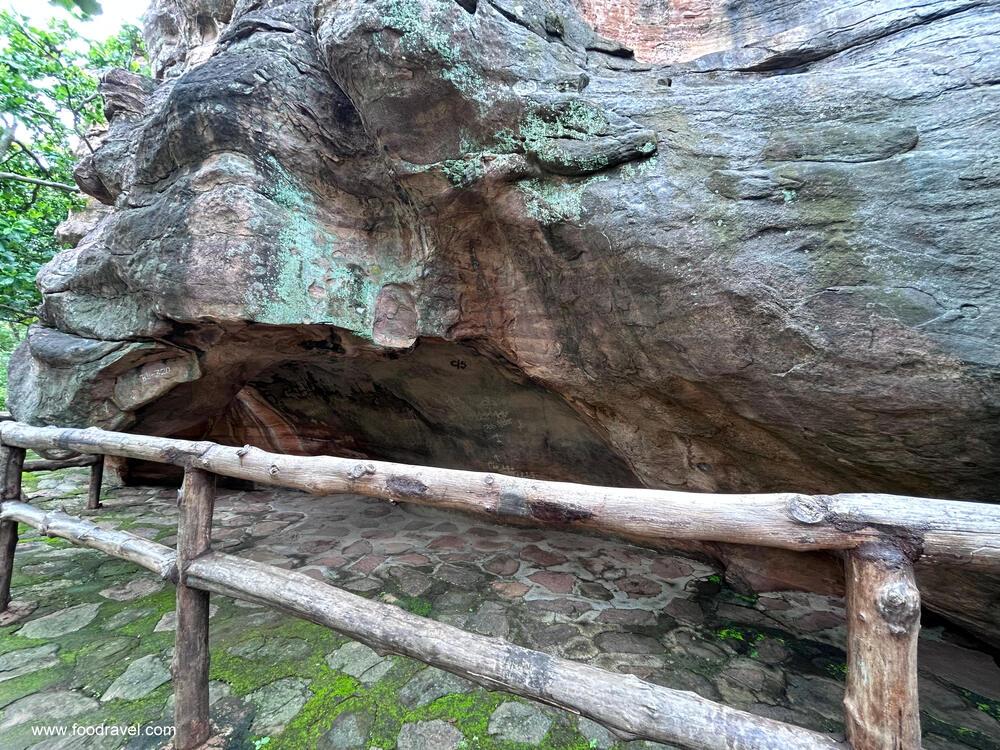
The Auditorium Cave: A Majestic Feature of Bhimbetka Cave’s Archaeological Wonder
Among the myriad rock shelters at Bhimbetka, the Auditorium Cave stands out as a remarkable and significant feature. This grand cave is encircled by towering quartzite formations, visible from several kilometers away, making it an impressive landmark. Described by Robert G. Bednarik as having a “cathedral-like” ambiance with “Gothic arches and soaring spaces,” the Auditorium Cave is the largest shelter within the Bhimbetka complex.
Its layout resembles a “right-angled cross,” with four branches aligned to the cardinal directions, and its main entrance oriented towards the east. At the end of this eastern passage, one encounters a striking boulder known as “Chief’s Rock” or “King’s Rock” in archaeological circles. This boulder, visible from a distance and from all directions, features a near-vertical panel that stands out prominently.
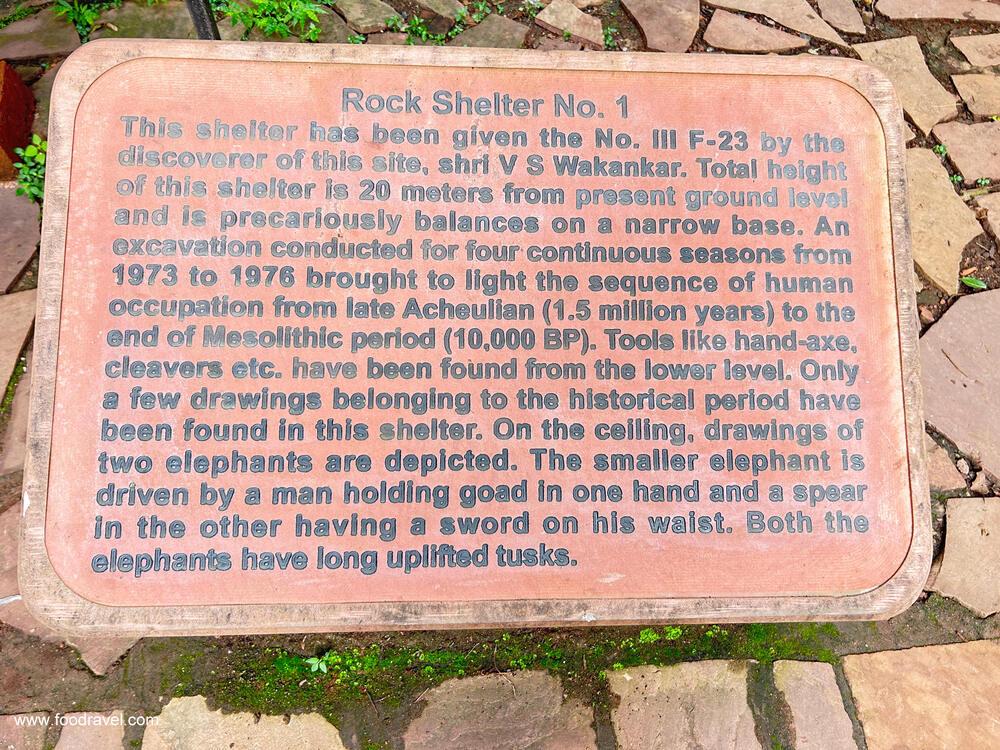
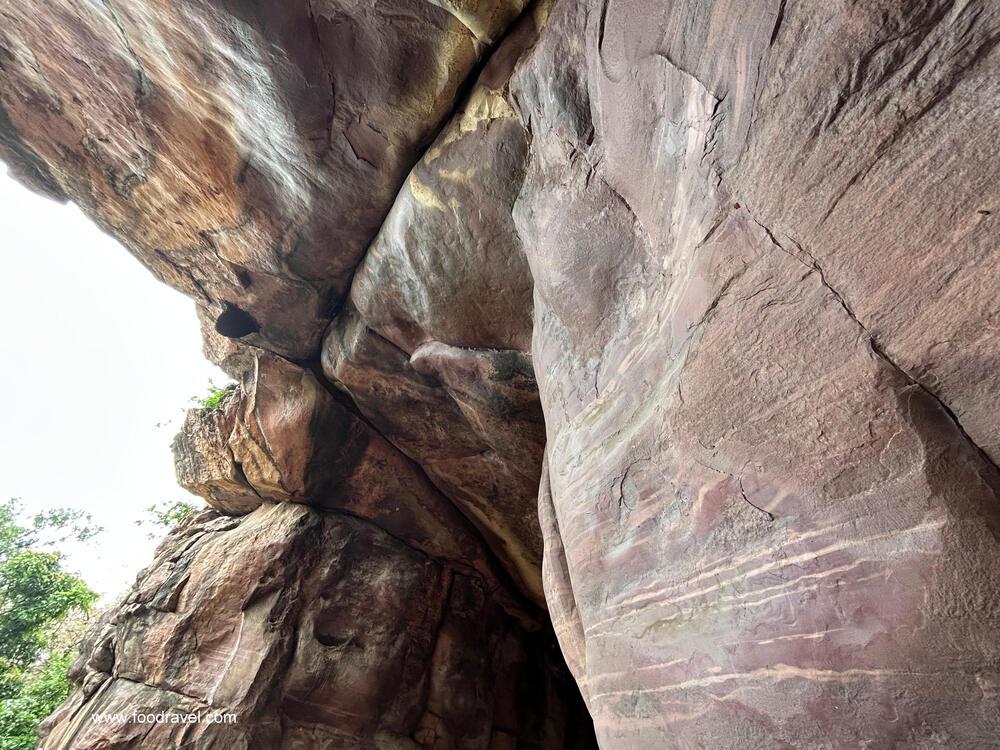
Despite its grand appearance and historical significance, there is no evidence to suggest that the boulder was used for rituals or ceremonies. Nonetheless, it remains a central feature of Bhimbetka, nestled among its 754 numbered shelters spread across several kilometers. Nearly 500 locations within this site boast rock paintings, adding to the cave’s historical and cultural richness. Bednarik’s observations underscore the Auditorium Cave’s importance as a focal point within this extraordinary archaeological site.
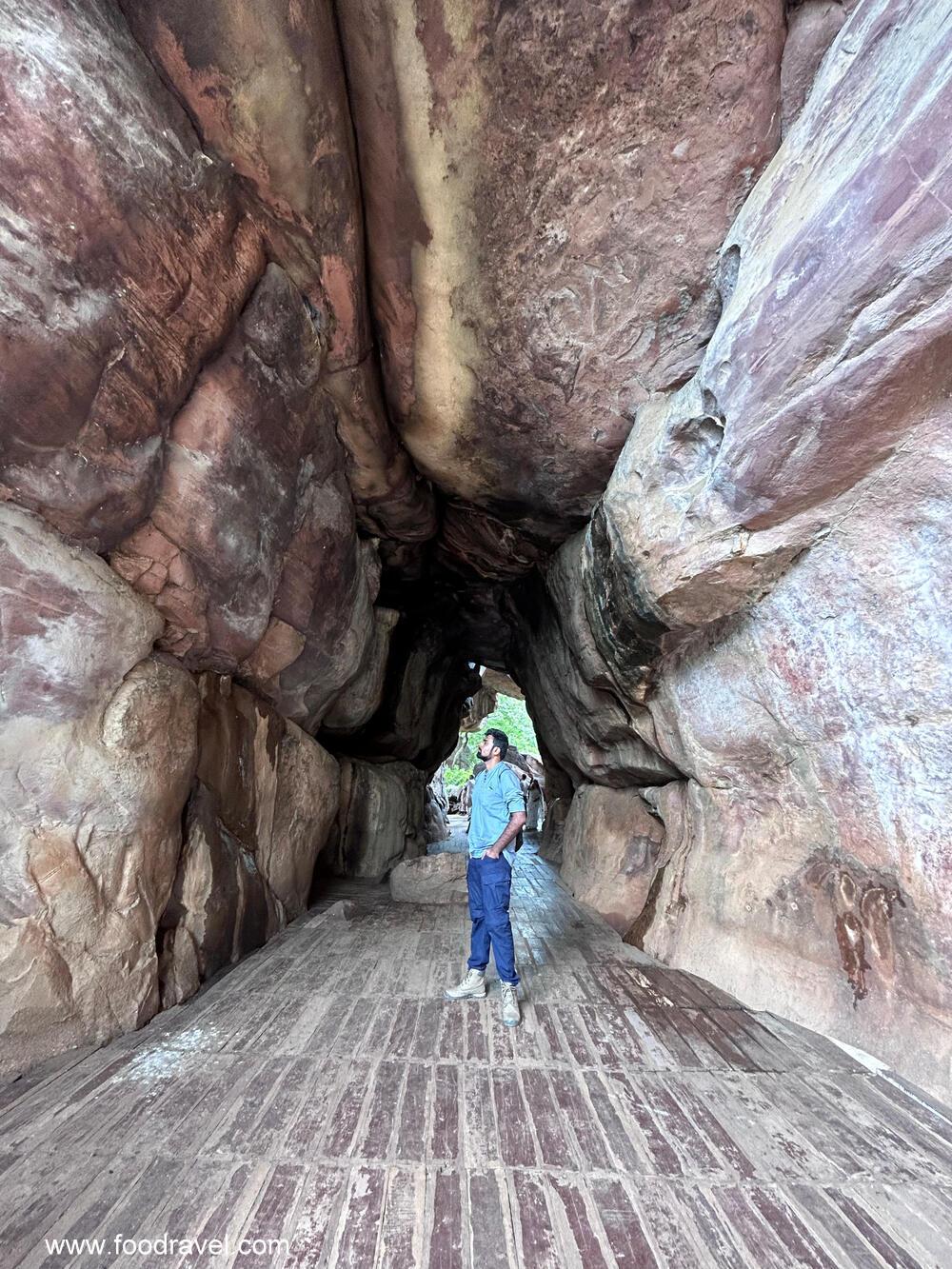
Fossil Discoveries and Paleogeographic Implications at Bhimbetka: Dickinsonia tenuis
The Bhimbetka rock shelters, renowned for their prehistoric rock paintings and archaeological significance, were once the subject of a fascinating yet contentious paleontological claim. Fossils of Dickinsonia tenuis, an early animal from the Ediacaran Period, were reported from this site. These fossils were initially considered to be identical to those found in the Ediacara Member of the Ediacara Hills in South Australia. Such a discovery was monumental, as it suggested a connection between ancient continents and provided insight into the early life forms of the Earth.
The presence of Dickinsonia tenuis at Bhimbetka led to several significant paleogeographic conclusions, notably the formation of Gondwanaland, a supercontinent that existed around 550 million years ago. This theory was built on the premise that the fossil evidence indicated a continuity of life forms and landmasses across what are now separate continents.
However, further examination and research later disproved this initial finding. It was revealed that the so-called Dickinsonia fossils at Bhimbetka caves were not genuine at all. Instead, they were identified as decayed remnants of a beehive, a natural formation that had been misinterpreted as ancient fossils. This correction was crucial in maintaining scientific accuracy and underscoring the need for careful analysis in paleontological studies.
While the initial discovery captured significant attention and offered intriguing insights into early Earth history, the subsequent clarification reminded the scientific community of the importance of thorough verification in paleontological research. Despite this, Bhimbetka caves remain a site of immense historical and archaeological value, continuing to contribute to our understanding of early human and artistic development.

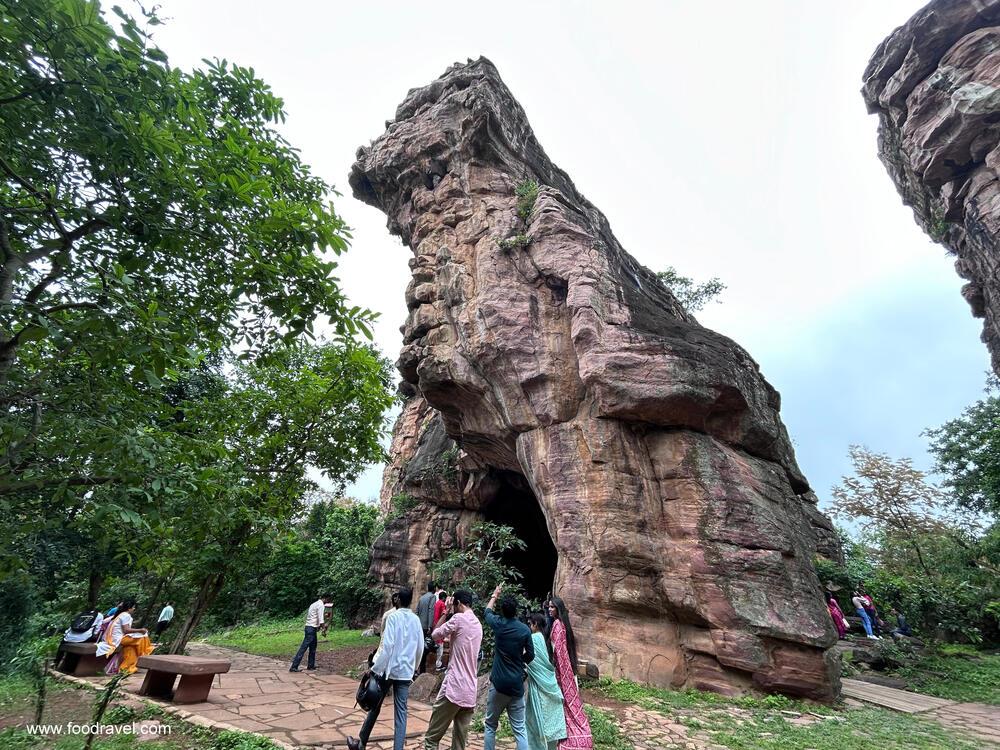
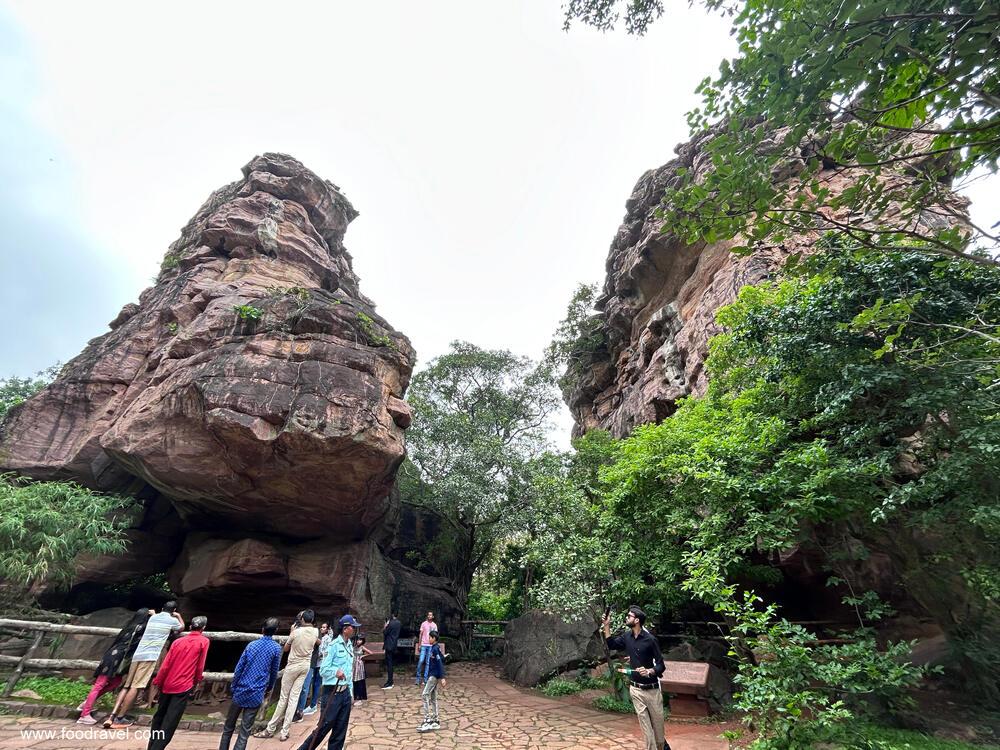
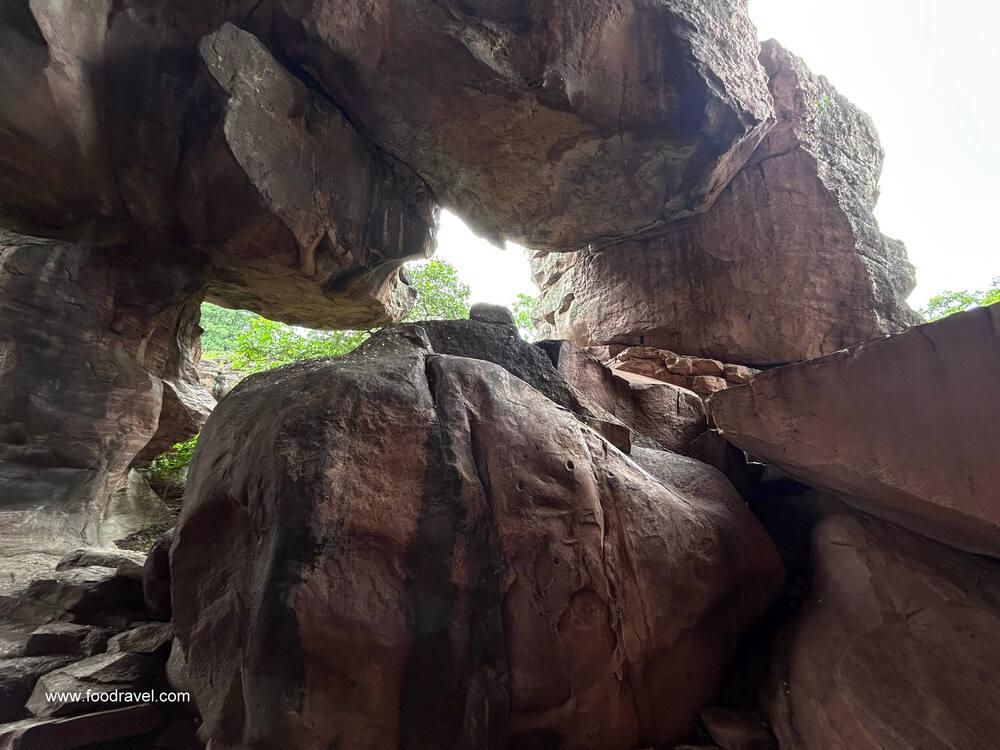
I spent nearly 3-4 hours exploring the Bhimbetka caves and rock shelters, thoroughly captivated by each moment. With a pressing need to move on to my next destination, I found myself deeply engrossed in the intricate details of every rock shelter and painting. The profound sense of history and the ancient artistry left me mesmerized. Each shelter told a story, each painting a glimpse into the past, drawing me into a timeless narrative of human existence. Despite the limited time, the experience was profoundly enriching, leaving me in awe of the historical and cultural significance etched into these ancient walls.

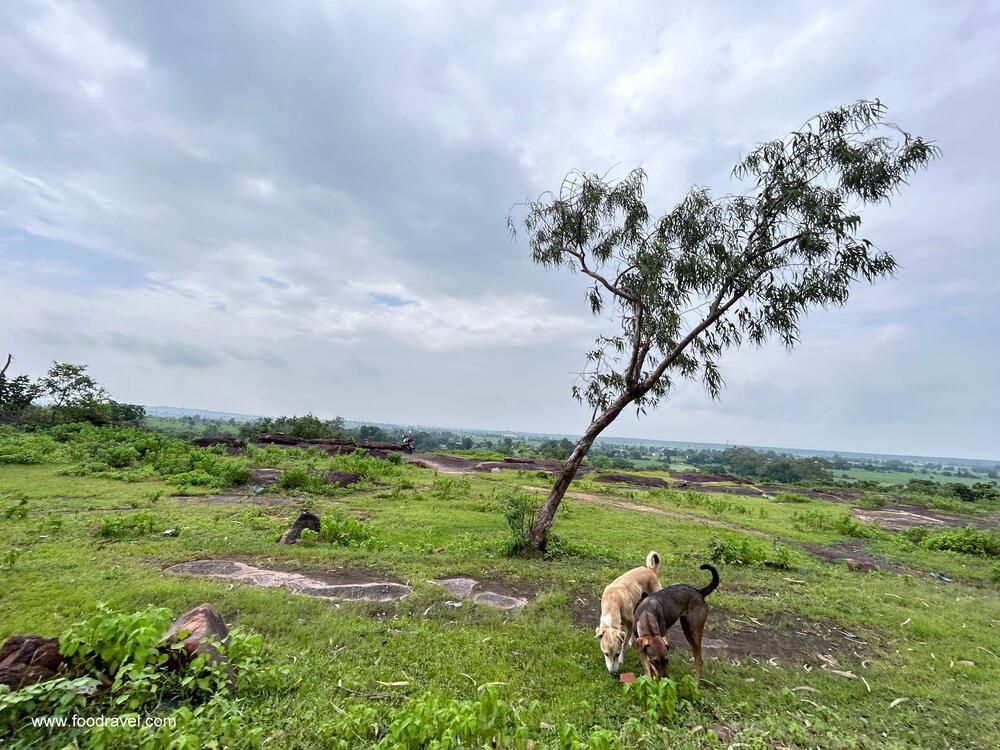
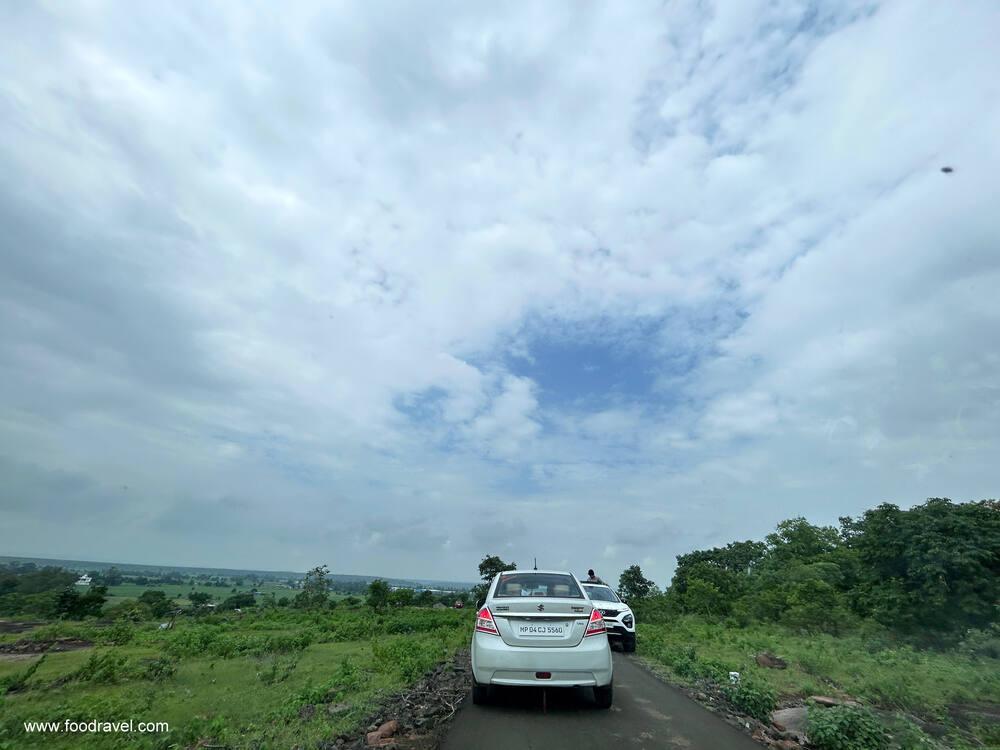
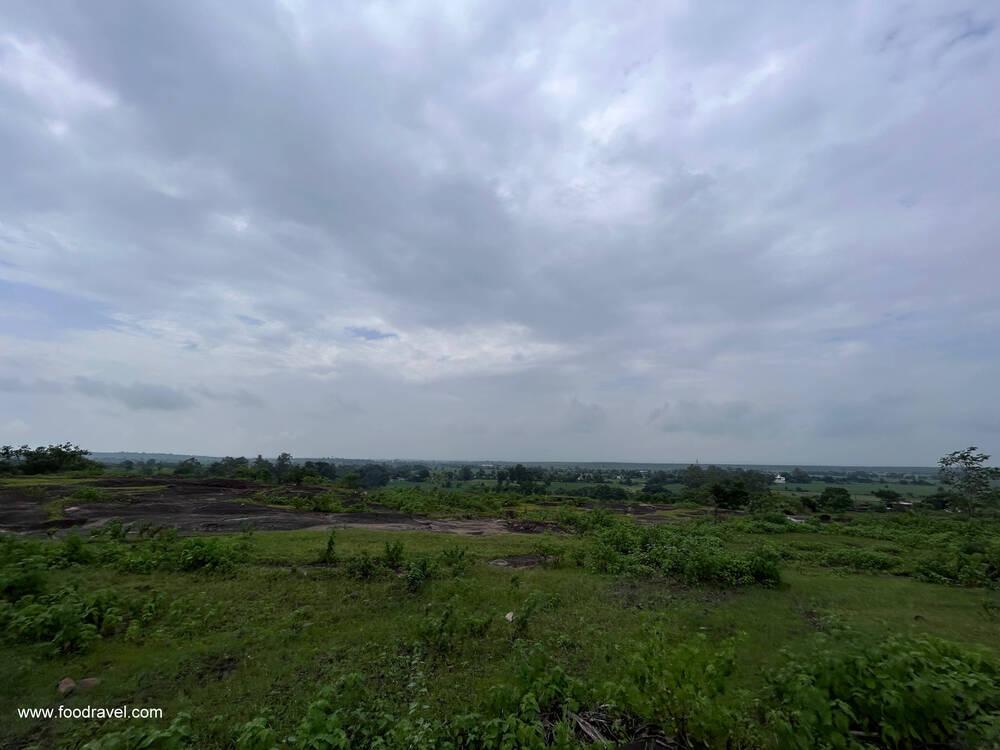
Visiting archaeological sites like the Bhimbetka caves rock shelters is a profoundly enriching experience. Each location serves as a window into the past, offering tangible connections to ancient civilizations and their way of life. As you wander through these historic sites, you encounter remnants of human creativity and daily life, preserved through millennia. The intricate cave paintings and rock formations tell stories of early humans, their beliefs, and their environment. These places spark a deep sense of wonder and curiosity, inviting you to ponder the lives and experiences of those who lived long before us. Walking among such ancient remnants allows you to reflect on the enduring nature of human expression and our shared heritage. The experience is both educational and inspirational, leaving you with a greater appreciation for the complexity and continuity of human history.
What are the Bhimbetka Caves?
The Bhimbetka Caves are a collection of rock shelters and caves located in the Raisen District of Madhya Pradesh, India. They are famous for their ancient rock art, including paintings and carvings that offer a glimpse into early human life and culture.
![]()
Where are the Bhimbetka Caves located?
The Bhimbetka Caves are situated about 45 kilometers southeast of Bhopal, in the Raisen District of Madhya Pradesh. The site is within the Ratapani Wildlife Sanctuary.
![]()
What is the significance of the Bhimbetka Caves?
The Bhimbetka Caves are renowned for their prehistoric rock art, which dates back to the Paleolithic and Mesolithic periods. The artwork provides valuable insights into early human life, art, and cultural evolution.
![]()
How old are the paintings in the Bhimbetka Caves?
The rock paintings in the Bhimbetka Caves are some of the oldest in India, with some dating back to around 10,000 BCE. The site features art from various periods, including the Upper Paleolithic, Mesolithic, and early historic periods.
![]()
What types of paintings can be found at Bhimbetka?
The cave paintings at Bhimbetka depict animals, human figures, hunting scenes, dance, and ceremonial activities. The art spans multiple periods, including Upper Paleolithic, Mesolithic, Chalcolithic, and early historic times.
![]()
How many rock shelters are there at Bhimbetka?
The Bhimbetka site includes over 750 rock shelters, with more than 500 locations featuring rock paintings. The shelters are spread across seven hills within the site.
![]()
Who first discovered the significance of the Bhimbetka Caves?
The significance of the Bhimbetka Caves was first recognized by V. S. Wakankar, an Indian archaeologist, who visited the site in 1957 and identified its prehistoric importance.
![]()
When were the Bhimbetka Caves designated as a UNESCO World Heritage Site?
The Bhimbetka Caves were designated as a UNESCO World Heritage Site in 2003 due to their outstanding universal value and archaeological significance.
![]()
What is the “Auditorium Cave” and why is it notable?
The Auditorium Cave is one of the largest and most significant shelters at Bhimbetka. It is notable for its cathedral-like atmosphere and distinctive rock formations, and it contains important prehistoric art.
![]()
What are the visiting hours for the Bhimbetka Caves?
The Bhimbetka Caves are generally open to visitors from 8:00 AM to 5:00 PM daily. It is advisable to check for any changes in timings or special instructions before visiting.
![]()
Is there an entrance fee for visiting the Bhimbetka Caves?
Yes, there is an entrance fee for the Bhimbetka Caves. The fee varies for Indian and foreign tourists, and there may be additional charges for cameras or guides.
| Entry Fee | ₹ 25 for Indians; ₹ 500 for foreigners |
| Entry Fee for vehicles | ₹ 100 (for two-wheelers); ₹ 300 (for cars) |
![]()
Are guides available at the Bhimbetka Caves?
Yes, local guides are available at the Bhimbetka Caves. They can provide detailed information about the history, significance, and artwork of the caves. It is recommended to hire a guide for a more informative experience.
![]()
What are the nearby attractions to visit along with the Bhimbetka Caves?
Nearby attractions include the Bhojpur Temple, which is known for its large Shivalinga, and the Ratapani Wildlife Sanctuary, which offers opportunities for wildlife sightings and nature walks.
![]()
Are there food and dining options near the Bhimbetka Caves?
There are limited dining options near the Bhimbetka Caves. You might find some local eateries and small cafes in the nearby towns of Obedullaganj and Bhopal. It is advisable to carry water and snacks with you.
![]()
How should I prepare for a visit to the Bhimbetka Caves?
![]()
Is there any facility for washrooms at the Bhimbetka Caves?
Basic washroom facilities are available at the Bhimbetka Caves. However, the facilities may be minimal, so it’s a good idea to use the restroom before arriving at the site.
![]()
What is the best time to visit the Bhimbetka Caves?
The best time to visit the Bhimbetka Caves is during the cooler months from October to March. The weather is more pleasant, and it’s easier to explore the site.
![]()
![]()

